Native
Tribal Art, Design, Old and Modern Masters: A Private Collection and Various Owners
27 May 2023 - Brussels






Tribal Art, Design, Old and Modern Masters: A Private Collection and Various Owners
27 May 2023 - Brussels





Preview & Auction
Rue Américaine, 26-28 1060 Brussels
Ofce and depot Ruisbroeck Galerij 5
Galerie de Ruysbroeck 5 1000 Brussels
info@native-auctions.com
T +32 (0) 2 514 04 42
Nicolas Paszukiewicz
n.paszukiewicz@native-auctions.com
Sébastien Hauwaert
s.hauwaert@native-auctions.com
Gilles Marquenie
g.marquenie@native-auctions.com
Tribal Art, Design, Old and Modern Masters: A Private Collection and Various Owners
27 May 2023 - Brussels
Lots 1 - 51
001 Poul Kjærholm (Danish, 1929 - 1980)
Pair of PK22 Lounge Chairs - 1956
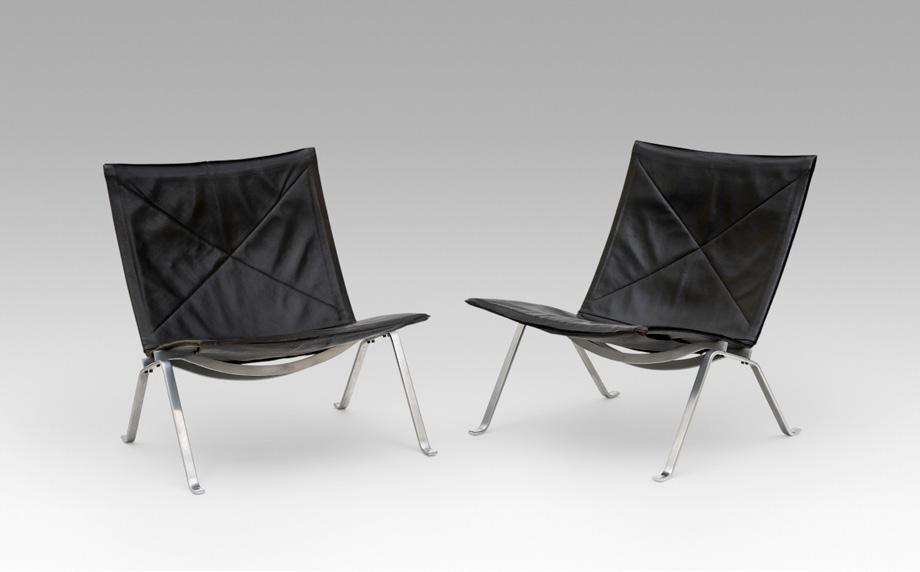
Steel and original leather
70 x 63 x 70 cm
First edition by E. Kold Christensen (before 1981)
With stamped mark EKC
Literature:
Michael Sheridan, The Furniture of Poul Kjaerholm: Catalogue Raisonné, Gregory R. Miller & Co., New York, 2007, pp.73-76
€ 4000 - 6000
Mali
Wood, 10 x 17 cm
Provenance: Jacques Kerchache collection, Paris Private collection, Brussels
€ 6000 - 8000
Ancient altar representing a dog, an animal that played a central role in Dogon mythology. In "African Art of the Dogon: The Myths of the Cliff Dwellers" (Studio Editions, 1973), Jean Laude relates the following story: "When the migrating Dogon arrived at the edge of the Bandiagara cliff, they came into conflict with the Tellem, who jealously concealed the location of wells and water holes. Exhausted by their journey and parched by the drought, the Dogon saw one of their dogs come running with wet paws. They occupied the watering place discovered by the animal and, thus refreshed, were able to dislodge the Tellem from the Cliff.”
Ritual sculptures of this importance are exceedingly rare. Altar sculptures with similar iconography and use belong to the collections of the Dapper Museum in Paris (former Lester Wunderman collection, New York) and the Metropolitan Museum of Art, New York (inv.1979.206.140).
With rich, lustrous patina of use.

Luzon Island, Philippines
Wood, 30 x 30 cm
Provenance:
Native Auctions, Brussels
Private collection, Brussels
€ 800 - 1200


Japan
Wood, 12,5 x 18 x 18 cm
Provenance:
Patrick & Ondine Mestdagh, Brussels
Private collection, Brussels
€ 1000 - 1500
005 Poul Kjærholm
(Danish, 1929 - 1980)
Office Table PK51 - 1957
Ash veneer wood and brushed steel
68 x 204 x 102 cm
Manufactured by E. Kold Christensen - Stamped EKC
Literature:
Frederik Sieck, Contemporary Danish Furniture Design: A short illustrated review, Nyt Nordisk Forlag, Copenhagen, 1990, p.147 Christoffer Harlang, Keld Helmer-Petersen and Krestine
Kjærholm, Poul Kjærholm, Arkitektens Forlag, Copenhagen, 1999, pp. 23, 92-93, 153, 177
Michael Sheridan, The Furniture of Poul Kjærholm: Catalogue
Raisonné, New York, 2007, pp. 96-99, 103
€ 2000 - 3000
Poul Kjærholm devised a numbering system for the furniture he designed between 1948 and 1980 consisting of his initials, followed by a series of numbers specifically indicating the type of furniture. Tables were numbered PK 40 to PK 59.
The combination of two radically different materials - warm, natural wood with cold brushed steel - is quintessential to his style. This juxtaposition brings out the qualities of both materials. A keen sense of proportions further conveys an elegance that became his trademark.
006 . Poul Kjærholm
(Danish, 1929 - 1980)
PK 11 Armchair - 1957
Steel with nickel finish and original leather upholstery
66 x 63 x 46 cm
First Edition
Manufactured by E. Kold Christensen (before 1981)
Stamped EKC
Literature:
Michael Sheridan, The Furniture of Poul Kjaerholm: Catalogue
Raisonné, Gregory R. Miller & Co., New York, 2007, pp.97, 99-103
€ 5000 - 7000

007 Bambara Female Figure
Mali - 19th C. Wood, beads, and shells, 53 cm
Provenance: Galerie Bernard Dulon, Paris Guy Porré Collection
Guilhem Montagut, Barcelona Private collection, Brussels
€ 30 000 - 50 000
Jo Nyeleni, important female figure that strikingly illustrates all the essential characteristics of Bambara sculpture. Following a recurrent sculptural canon, the different parts of the human body are treated as almost separate elements, to be joined with an architectural logic in rhythmic alternations of protruding and receding volumes.
The elaborate pattern of scarifications and the beautiful patina of age testify to the importance this sculpture had in the Jo society, both expressing and enhancing its power.

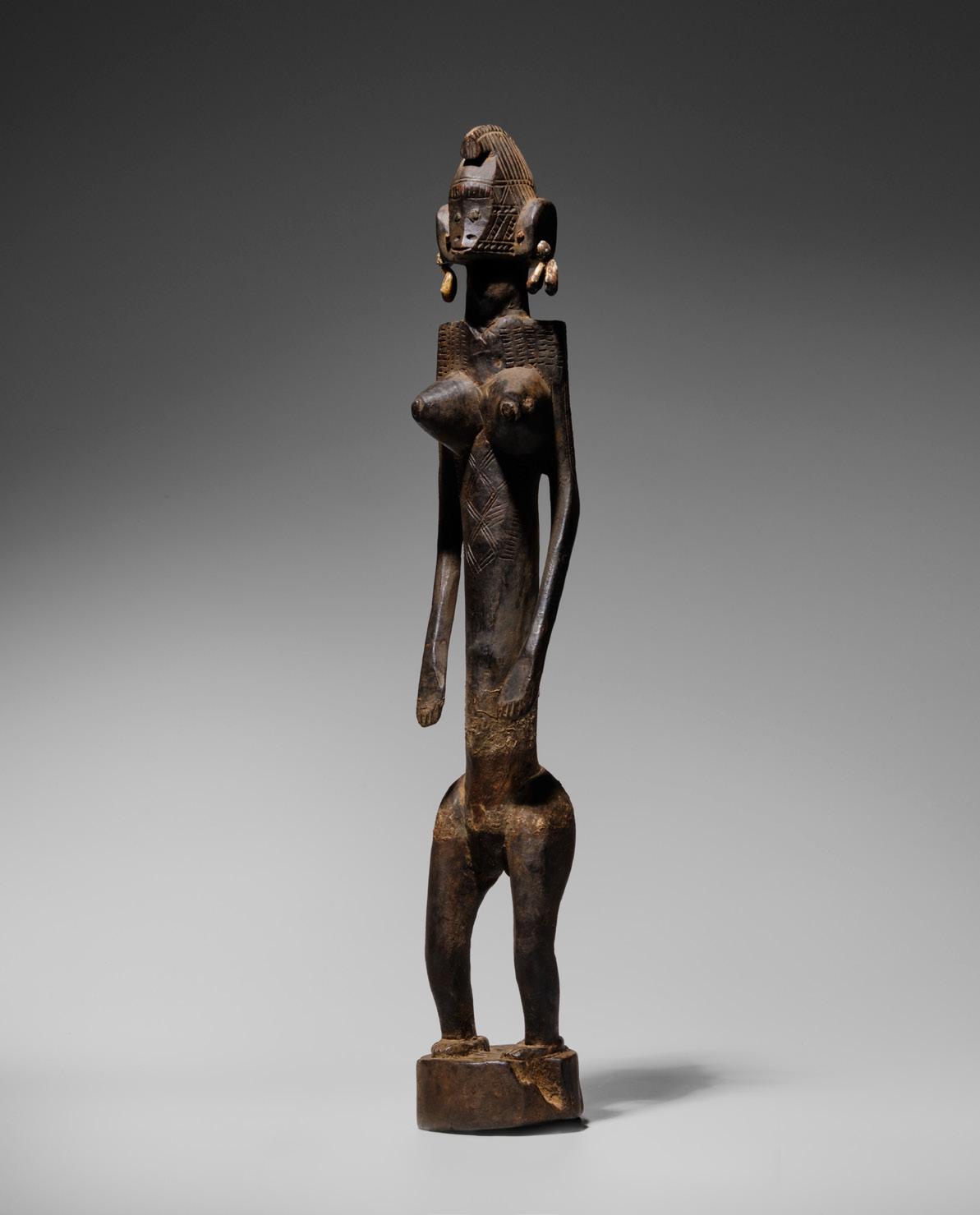
008 . Ronan Barrot (French, 1973)
Crâne [Skull] - 2010
Oil on canvas, 27 x 22 cm
Signed and dated on verso: 2010/09/01
Provenance:
Galerie Claude Bernard, Paris (label on verso)
Private collection, Brussels
Exhibited:
Ronan Barrot, Galerie Claude Bernard, Paris, 8 October - 20 November 2010
Represented since 2007 by Galerie Claude Bernard in Paris, Ronan Barrot’s paintings can also be found in the collections of the Musée d'Art Moderne de la Ville de Paris, the Fondation Maeght at Saint-Paul de Vence, the Musée d’Art Moderne et Contemporain of Strasbourg, and the FRAC collections of Ilede-France-Le-Plateay and Auvergne a.o.

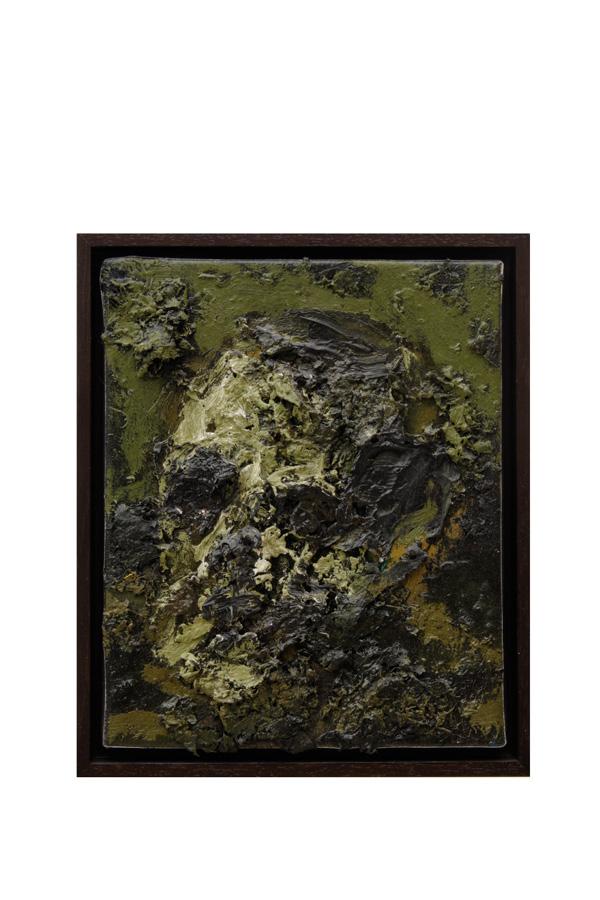
€ 1000 - 1500
009 . Ronan Barrot (French, 1973)
Crâne [Skull] - 2010
Oil on canvas, 27 x 22 cm
Signed and dated on verso: 2010/04/01
Provenance:
Galerie Claude Bernard, Paris (label on verso)
Private collection, Brussels
Exhibited:
Ronan Barrot, Galerie Claude Bernard, Paris, 8 October - 20 November 2010
€ 1000 - 1500
Crâne [Skull] - 2010
Oil on canvas, 27 x 22 cm
Signed and dated on verso: 2010/12/01
Provenance:
Galerie Claude Bernard, Paris (label on verso)
Private collection, Brussels
Exhibited:
Ronan Barrot, Galerie Claude Bernard, Paris, 8 October - 20 November 2010
€ 1000 - 1500
Crâne [Skull] - 2010
Oil on canvas, 27 x 22 cm
Signed and dated on verso: 2010/06/01
Provenance:
Galerie Claude Bernard, Paris (label on verso)
Private collection, Brussels
Exhibited:
Ronan Barrot, Galerie Claude Bernard, Paris, 8 October - 20 November 2010

€ 1000 - 1500
 010 . Ronan Barrot (French, 1973)
011 . Ronan Barrot (French, 1973)
010 . Ronan Barrot (French, 1973)
011 . Ronan Barrot (French, 1973)
012 . Shozo Shimamoto (Japanese, 1928 - 2013)
Ana Esquisse - 1962 [Hole]
Ink and gouache on torn paper, 36,4 x 51,3 cm Signed lower right
Provenance:
Hundermark Gallery, Cologne Private collection, Belgium
Exhibited:
Hundermark Gallery, Cologne, Shozo Shimamoto, Gutai Works, 24 August - 4 October 1997 Marcon, Venice, Padiglione delle Arti, “e” – Gutai Paintings in the Midsummer Burning Sun, 25 July - 5 September 2015
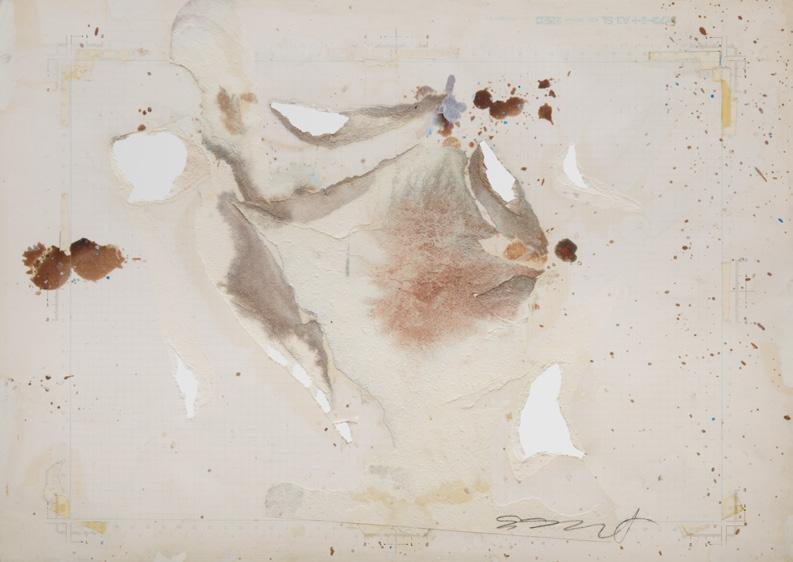
With a certificate of authenticity by the artist, dated 11/11/2004. The work is included in the Associazione Shozo Shimamoto archives under number 1061.
€ 10 000 - 15 000
Shozo Shimamoto was one of the founding members of the Gutai Bijutsu Kyokai (Gutai Art Association) that was formed in 1954 in Osaka by Yoshihara Jiro, Kanayama Akira, Murakami Saburo, Shiraga Kazuo, and Shozo Shimamoto. It was actually Shimamoto who came up with the name Gutai, usually translated as ‘embodiment’ or ‘concrete’.
013 . Tapio Wirkkala
(Finnish, 1915 - 1985)
Desk Lamp Prototype - c.1959
Brass and lightbulb
79 x 45 x 10 cm
Manufactured by Idman Oy With Idman mark
€ 10 000 - 15 000
Unique prototype by Tapio Wirkkala for the Idman Oy lighting manufactury. The counterweight structure for this desk lamp can already be found in the K 10-11 lamp as published in the 1958 Idman catalog. It is in 1959 that Wirkkala started exploring the possibilities of altering the shape of the lightbulb itself. Instead of focusing on the design of the lampshade, Wirkkala came up with the ingenious idea to design a lightbulb that was beautiful in its own right. The WIR105 lightbulb for this desklamp is actually one of the few lightbulbs included in the collection of the MoMA (inv. 258.1962).
In this prototype we can see how Wirkkala restricted his design of the lamp head to a simple cylinder, allowing the lightbulb to shine, both in a literal and a figurative manner of speaking.
The lamp comes with three lightbulbs: a white, a blue and a pink one.
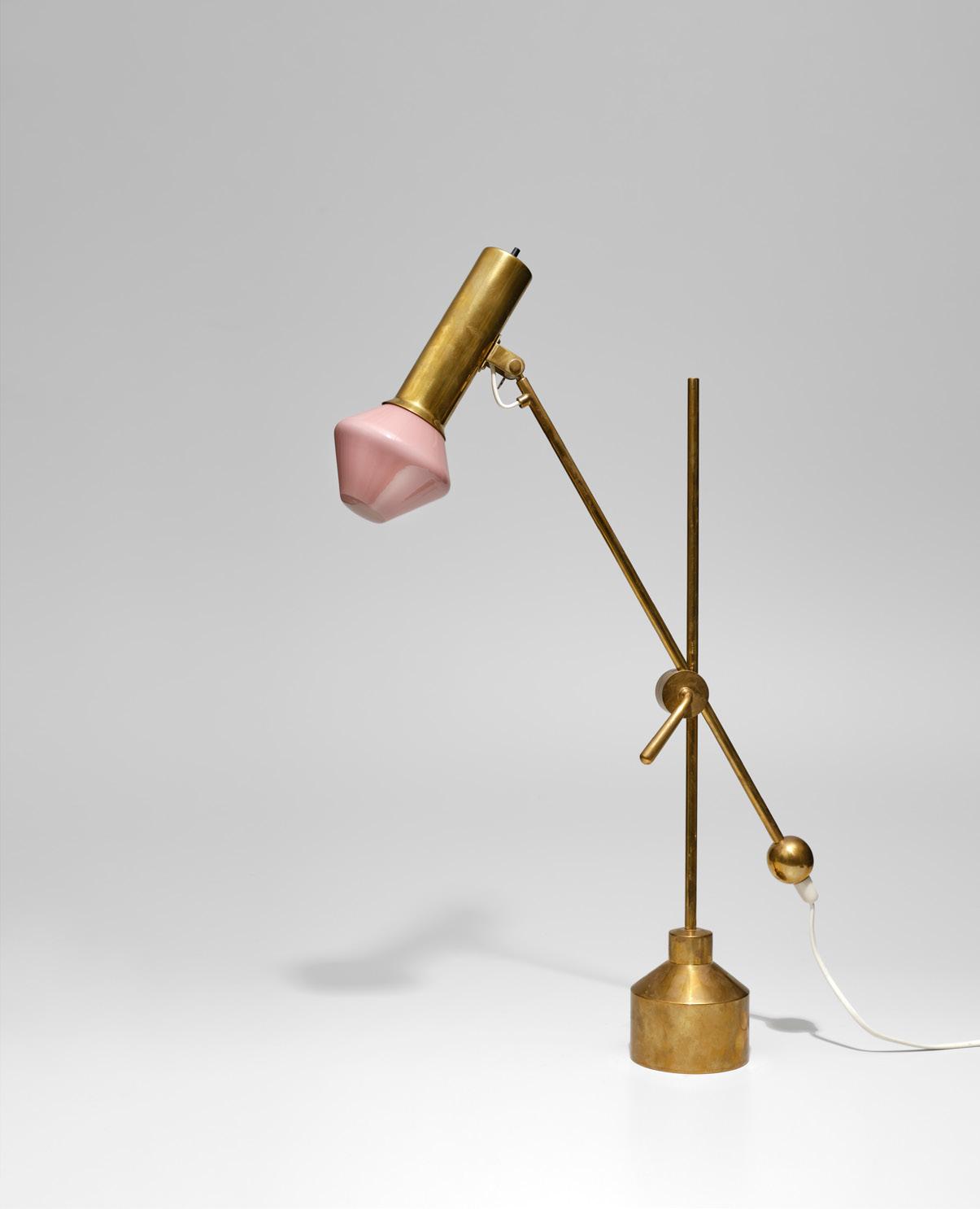

014 Baule Figure
Mali - c. 19th C. Wood and beads, 40 cm
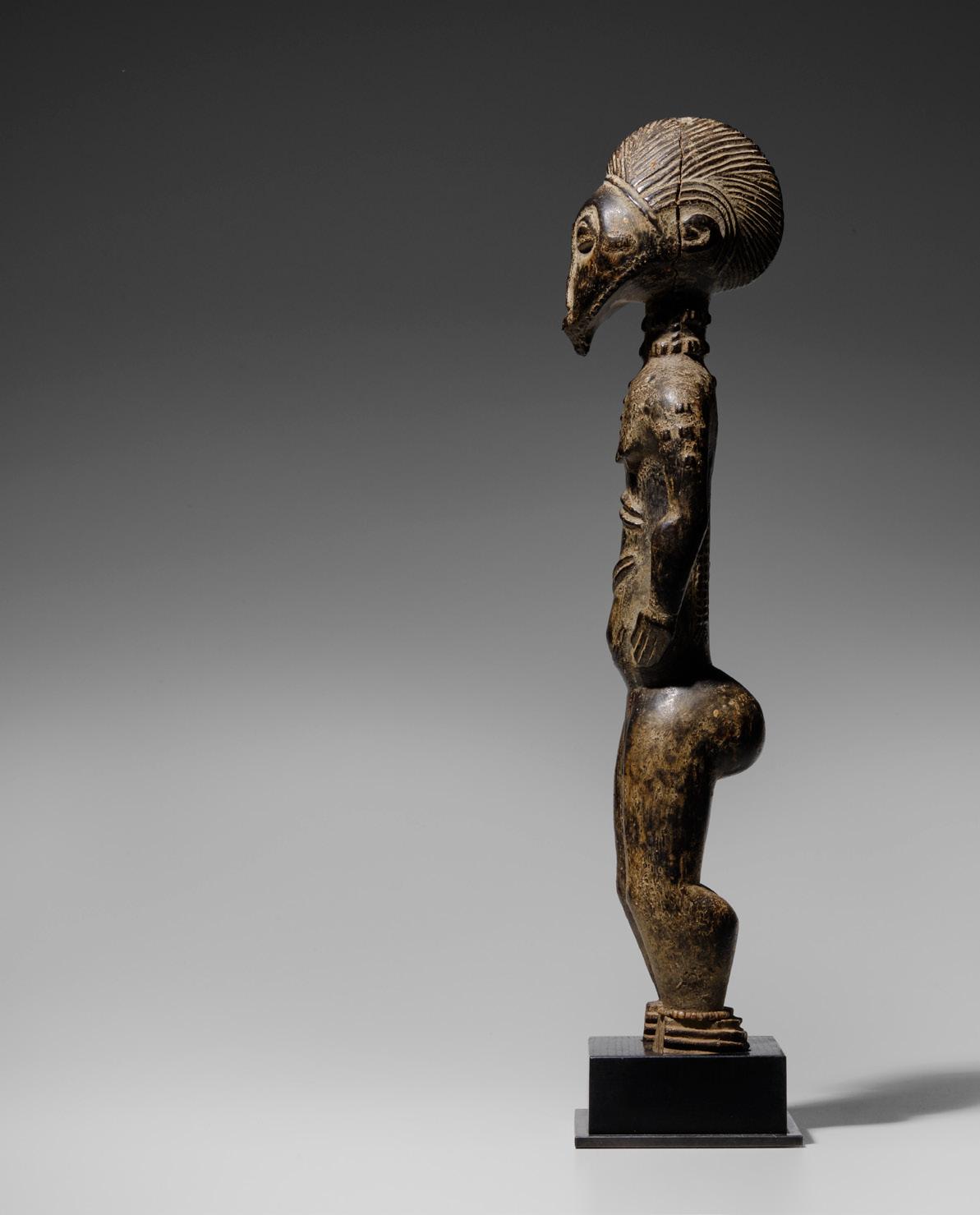
Provenance:
De Young Museum - Fine Arts Museum, San Francisco, U.S. (inv. S 3202)
Private collection, New England, U.S.A.
Christophe Rolley collection, Paris, France (acquired in 2005)
Olivier Castellano, Paris, France (2016)
Private collection, Brussels
Exhibited:
s.d. on loan at the Museum M. H. de Young Museum, San Francisco Parcours des Mondes, Paris, Galerie Olivier Castellano, 6 - 11 September 2016
Winter BRUNEAF, Brussels, Galerie Olivier Castellano, 22 - 26 January 2020
Published:
Galerie Olivier Castellano, Parcours des Mondes, Paris, 2018, pp.38-39 (ill.)
€ 12 000 - 15 000
This exceptional Baule figure, with its outspoken round volumes that articulate the figure’s anatomy, strikes us most for its superb profile that betrays the hands of an exceptional sculptor. The rather round face in the frontal view offers a surprising contrast with the slender profile in the shape of a slanted waterdrop.
In this sculpture, we recognize a number of criteria that represent the Baule vision of a physical and moral ideal: a hieratic pose, refined scarifications, a sophisticated hairdo, strong and round muscles,…
Sculptures like these were often made for trance diviners, and the encrusted patina bears witness to its age and use.
015 Märta Blomstedt (Finnish, 1899 - 1982)
Pair of Lounge chairs - (1939) 1940s
Sheepskin and birch

89 x 106 x 105 cm
€ 25 000 - 35 000
Originally designed for the Aulanko Hotel’s lounge area in 1939, these armchairs by Märtha Blomstedt embody the functionalism and modernism for which Finnish designers became famous.

The hotel’s construction in the city of Hämeenlinna at the shore of Lake Vanajavesi was entrusted to Blomstedt & Lampén, and conceived as a total artwork where the design of the functional architecture, its interplay with the natural setting, as well as the furniture, artworks, tableware, and textile, were treated as an ensemble.
The armchairs designed for the hotel had tubular steel feet, but after the outbreak of the war, steel could no longer be used for furniture, and a model – like the one presented here – was subsequently designed with round feet in tainted elm wood. This pair of chairs with new sheepskin upholstery dates from the 1940s.
016 . Baule Goli Mask

Ivory Coast Wood, 81 cm
Provenance: The Helmut Zake Collection, Heidelberg Native Auctions, Brussels, 19 March 2019, lot 68
Private collection, Brussels
€ 3000 - 5000
Untitled (Personnage) - 1970 Gouache on paper, 51 x 36 cm Signed and dated lower right
Provenance:
Galerie Claude Bernard, Paris Private collection, Brussels
€ 5000 - 7000
Maryan S. Maryan started the series of works titled “Personnages” in 1960 - about the same time as when he moved to the U.S.A. These works depict solitary figures on monochrome backgrounds in candy colors, grotesque, absurd, and unapologetically brutal. Maryan’s art has been associated with Nouveau Réalisme, Art Brut, CoBrA, and other figurative art currents of the time, but Maryan never belonged or adhered to any of those.
 017 . Maryan S. Maryan, pseudonym of Pinchas Burstein (Polish-American, 1927 - 1977)
017 . Maryan S. Maryan, pseudonym of Pinchas Burstein (Polish-American, 1927 - 1977)
Bul-Bo Floor Lamp - 1969 Leather, aluminum and rubber 230 cm

Linea GB Milano
€ 2000 - 3000
018 Roberto Gabetti and Aimora Isola (Italian, 1925-2000)Ghana Wood, 32,5 cm

Provenance:
Galerie Olivier Castellano, Paris Private collection, Brussels
€ 3000 - 5000
019 Ashanti Akuaba DollBurkina Faso
Wood, 32 cm

Provenance: Philippe Ratton, Paris Private collection, Brussels
€ 2000 - 3000
020 Mossi Doll1926-2009)
Sideboard

Teak and metal
80 x 197 x 49 cm
Manufactured by Sibast Møbler, Danmark
€ 3000 - 5000
021 Arne Vodder (Danish,022 Important Boli Figure Mali, Bambara Wood, organic and inorganic materials 40 x 49 cm
Provenance:
Jacques Kerchache Collection, Paris Anne Kerchache, Paris Anna and Antonio Casanovas, Galleria Arte y Ritual, Madrid Private Collection, Brussels
Published:
Martin Bethenod, Jacques Kerchache, Portraits croisés, Gallimard, Paris, 2003, p.22
€ 40 000 - 60 000



This exceptionally large Boli used to belong to the collection of Jacques Kerchache. In pictures from his apartment in Paris, it can be easily recognized on a shelf amongst one of the bookcases.
Boliw played a crucial role in Bamana rituals. They are predominantly made of a wooden core structure, sometimes including bones, around which clay and diverse materials are applied, resulting in bulbous, quite anamorphic figures, bearing a vague resemblance to a four-legged animal that can not be exactly identified. The continuous offering of sacrificial fluids and both organic and inorganic materials obscure the original shape of the boli. With each added layer of sacrificial materials, the spiritual power of the boli increases, and the rich layering and cracks of this boli testify to its age and extensive use.
 Photograph of the interior of Kerchache’s apartment in Paris, published in Martin Bethenod, Jacques Kerchache, Portraits croisés, Gallimard, Paris, 2003, p.22 - ©Philippe Chancel
Photograph of the interior of Kerchache’s apartment in Paris, published in Martin Bethenod, Jacques Kerchache, Portraits croisés, Gallimard, Paris, 2003, p.22 - ©Philippe Chancel
023 We Mask
Ivory Coast Wood, iron, fibers, and pigments
21 cm; 34 cm (incl. beard)
Provenance:
Merton Simpson Gallery, New York
Carole & Howard Tanenbaum collection, Toronto
Galerie Jacques Germain, Montreal Private collection, Brussels
Published:
Jacques Germain, Art Ancien de l'Afrique Noire VI, Montreal, 2013, pp.40-41 (ill.)
€ 15 000 - 20 000
Beggar mask embodying both the masculine and feminine essence of a half-divine entity.
The name "mendicant" derives from the fact that the wearer solicits donations during his outings, which can occur at any time.
As is the case with certain masks and Dan figures, the We artist will have covered the upper part of the face with braids held in place by metal hooks.
The forehead is marked with tegumentary scarification, in a central ridge that is similar to that found in many societies in Liberia and Ivory Coast. Perfectly adapted to the human face, this mask displays a mouth lined with small metal teeth and slit-shaped eyes that allow the dancer to avoid being recognized by the villagers.
Performances of We masks may span the careers of many generations of wearers, contributing to the increasingly sacred status of these objects. The ancient patina of repeated use testifies to the importance of this very mask.

024 Fante Doll
Ghana
Wood and pigment, 38 cm
Provenance:
Michel Anstett collection, Paris, Sale Parke-Bernet Galleries, New York, African Art. The Private Collection of Michel Anstett Paris, 21 January 1967, lot 65 (ill. p.34)
Pace Primitive, New York
Paul and Ruth Tishman collection, New York
Nancy and Richard Bloch collection, U.S.A.
Sale Sotheby's, London, Important Tribal Art, 21 June 1993, lot 84
American private collection
Sale Bonhams, New York, African, Oceanic and Pre-Columbian Art, 15 May 2013, lot 121 Private collection, Brussels

Exhibited:
The Israel Museum, Jerusalem, Masterpieces of African Art: The Tishman Collection, 1967
The Los Angeles County Museum of Art, California, Sculpture of Black Africa. The Paul Tishman Collection, 1968 (Travelling exhibition further held at the High Museum of Art, Atlanta, Georgia, 1969; Virginia Museum of Fine Arts, 1970; University of Texas College of Fine Arts, Austin City, Texas, 1970; City Art Museum, St. Louis, Missouri, 1971; Des Moines Art Center, Iowa; Huntington Galleries, Huntington, West Virginia)
Published:
The Israel Museum, Masterpieces of African Art: The Tishman Collection, 1967, fig.105
€ 4000 - 6000
025 Mumuye Figure
Nigeria
Wood, 99 cm
Provenance:
John J. Klejman Gallery, New York
American private collection
Private collection, Brussels
€ 20 000 - 30 000
Richard Fardon opens his article Negative spaces of Mumuye figure sculpture - style and ethnicity with the following: “When the British sculptor Henry Moore sketched a West African female figure shortly after its accession by the British Museum in 1922, he was struck by its enclosing arms, later commenting how ‘… the carver has managed to make [the figure] “spatial” by the way he has made the arms free and yet enveloping the central form of the body’.”*
The observation made by Moore is an astute one: it puts the finger exactly on that particular characteristic that makes Mumuye sculpture so unique, and why it made such an impression on Western artists and collectors alike. Fardon takes the understanding of this observation a step further, bringing forward the concept of negative spaces. To him “Negative spaces are not absences but positively delineated, fully present voids.”
The sculpture presented here could not better illustrate this approach to suggesting volumes by the means of “present voids”. The exaggeratedly big hands of the figure cradle the torso precisely in this manner to evoke a whole body, making full use of the hollowed-out trunk’s original shape.
*Richard Fardon, "Negative spaces of Mumuye figure sculpture - style and ethnicity", in Afriques Towards an Art History of precontemporary Africa: Methodology, Historiography, Epistemology, 10/2019 (online publication)



026 . Miquel Barceló (Spanish, 1957)
Deux poids différents - 2004 [Two Different Weights] Bronze, 49 x 40 cm

Signed and numbered on the base: 2/8 With foundry mark "Clémenti Cire Perdue" on the base
Provenance: Private collection, London Christie's Paris, Art d'Après-Guerre et Contemporain, 10 December 2008, lot 227 Private collection, Brussels
Published:
C. Etxepare Zugasti, R. Argullol, D. Ashton, Miquel Barcelo - Las formas del mundo obra recient, San Sebastian, 2005, p.75 (color ill.)
Exhibited:
Donostia-San Sebastian, Sala Kubo Kutxaespacio del Arte, Miquel Barcelo, May-July 2005, p.75 (color ill.)
€ 25 000 - 35 000

D.R. Congo
Wood, textile, mirror, glass, metal, hedgehog's quills, and resin
42,5 cm
Provenance:
Colonial collection, Belgium
Jacques de Prince, Brussels (until 1983)
Jacques Hautelet (1931-2014), La Jolla, California
Michael Berger, New Jersey
Bill and Ann Ziff collection, New York
Binoche et Giquello, Paris, "Arts d'Afrique et d'Océanie", 14 December 2018, lot 14
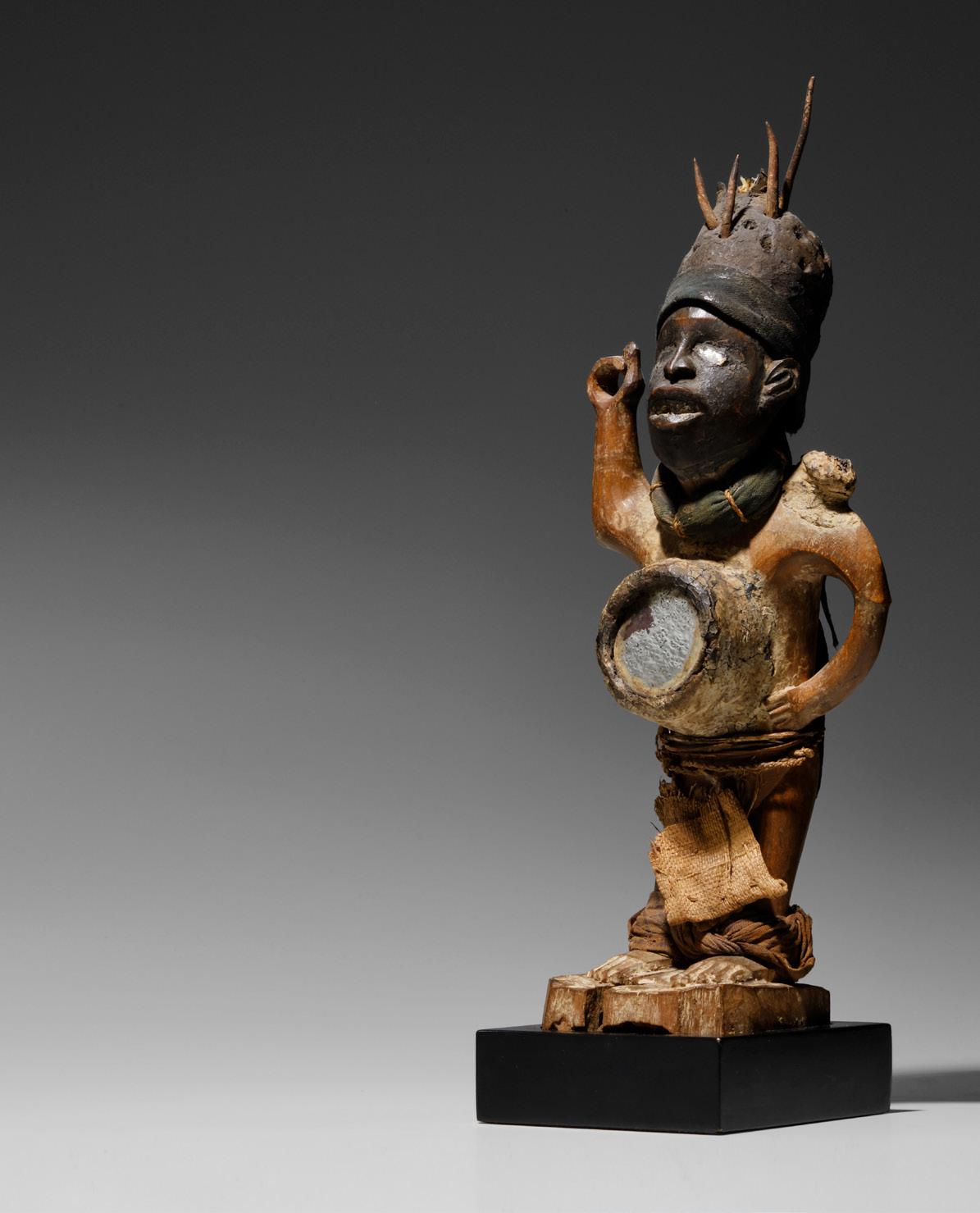
Private collection, Brussels
€ 18 000 - 25 000
Power figure with a mirror cover for the power charge in the abdominal cavity with a rich, crusty patina of use.
Nkisi N’konde were the fruit of a close collaboration between a sculptor and nganga or healer, the latter imbuing the effigy with magical charges and power. The uplifted head of the sculpture refers to the clairvoyant powers of the nganga when in trance and entering into the otherworldly realm where answers to the origins of problems can be found.
028 . Frédéric Bruly Bouabré (Ivorian, 1923-2014)
A la croisée des chemins - 2012 Color pencil and ink on paper 10 x 15 cm (29 #)
Each signed and dated on verso
Provenance: Private collection, Brussels
€ 8000 - 12 000
Artist and poet, Frédéric Bruly Bouabré is also the inventor of the “Bete alphabet”. In 1948 he had a “divine revelation” that it was his calling to save the culture of the Bete people from oblivion. In order to do so he devoted himself to the creation of an African alphabet. It consists of several hundreds of symbols and pictograms – some of his own invention, others based on engravings found on rocks near the village of Békora, near Zéprégühé -, each representing a specific syllable. With this alphabet, Frédéric Bruly Bouabré transcribed the stories of Bete cosmic mythologies and tales, but also events of daily modern life,
In the margins surrounding his drawings in color pencil, he writes in French the legends of what is represented for those who do not read or understand Bete. These framed drawings are usually presented in series, such as is the case here.
International recognition for his work came after the 1989 exhibition “Les Magiciens de la Terre” at the Centre Pompidou, and with his participation at the Venice Biennale of 2013 Frédéric Bruly Bouabré has become of the most original and acclaimed contemporary African artists.

Angola
Wood, 13 x 6 cm

Provenance:
Private collection, Brussels
Native Auctions, Brussels, October
2017, lot 5
Private collection, Brussels
€ 800 - 1200
029 . Chokwe Comb030 Pwo Chokwe Mask
Angola - c.1900 Wood, braided, metal and netted raffia headdress 20 cm; 28 cm (incl. headdress)
Provenance
Pierre Dartevelle, Brussels (c. 2000) Private collection, Brussels
€ 20 000 - 30 000
Delicately carved Mwana Pwo mask, representing a female ancestor of the Chokwe people. Used during ritual dances, sometimes in combination with the male ancestor mask called Cihongo, both types of masks were exclusively worn by men.

Mwana Pwo masks are of the greatest importance since descent amongst the Chokwe is through female lineage. Great care is taken in the rendering in detail of the scarification patterns and hairdo. These do not only express the ideal of female beauty but can also identify the female ancestor when of noble descent.
Where Cihongo masks symbolize authority and wealth, their female counterparts, the Mwana Pwo masks symbolize generative power. Combined in a performance, they are to bring fertility and prosperity to the community.
031 . Ado Chale (Belgian, 1928)
Sphère - 1985-1990
Aluminum

31 cm Ø
€ 3000 - 5000
032 Poul Kjærholm (Danish, 1929 - 1980)
Student Desk - 1955
Lacquered metal and Oregon pinewood
68 x 141 x 85 cm
Manufactured by cabinetmaker Rudolf Rasmussen
Provenance:
School of Architecture, Royal Danish Academy of Fine Arts in Copenhagen
Literature:
Poul Kjærholm Furniture Architect, 2006, Louisiana Museum of Modern Art, p. 36

Michael Sheridan, The Furniture of Poul Kjaerholm: Catalogue Raisonné, Gregory R. Miller & Co., New York, 2007, pp.60-61
€ 4000 - 6000
Designed in 1955 for the School of Architecture of the Royal Academy of Fine Arts in Copenhagen.
D.R. Congo
Terracotta, 32,5 cm
Provenance: Sœurs Dominicaines Missionnaires de Namur (c.1937)
Didier Claes, Brussels
Private collection, Brussels
Published:
Didier Claes Gallery, Mangbetu, Brussels, 2011, p.15
€ 15 000 - 20 000
During the 19th century, Mangbetu aristocracy was at the height of its power, which was reflected in the quality of their utilitarian objects, ranging from pottery, furniture, and instruments to weapons.
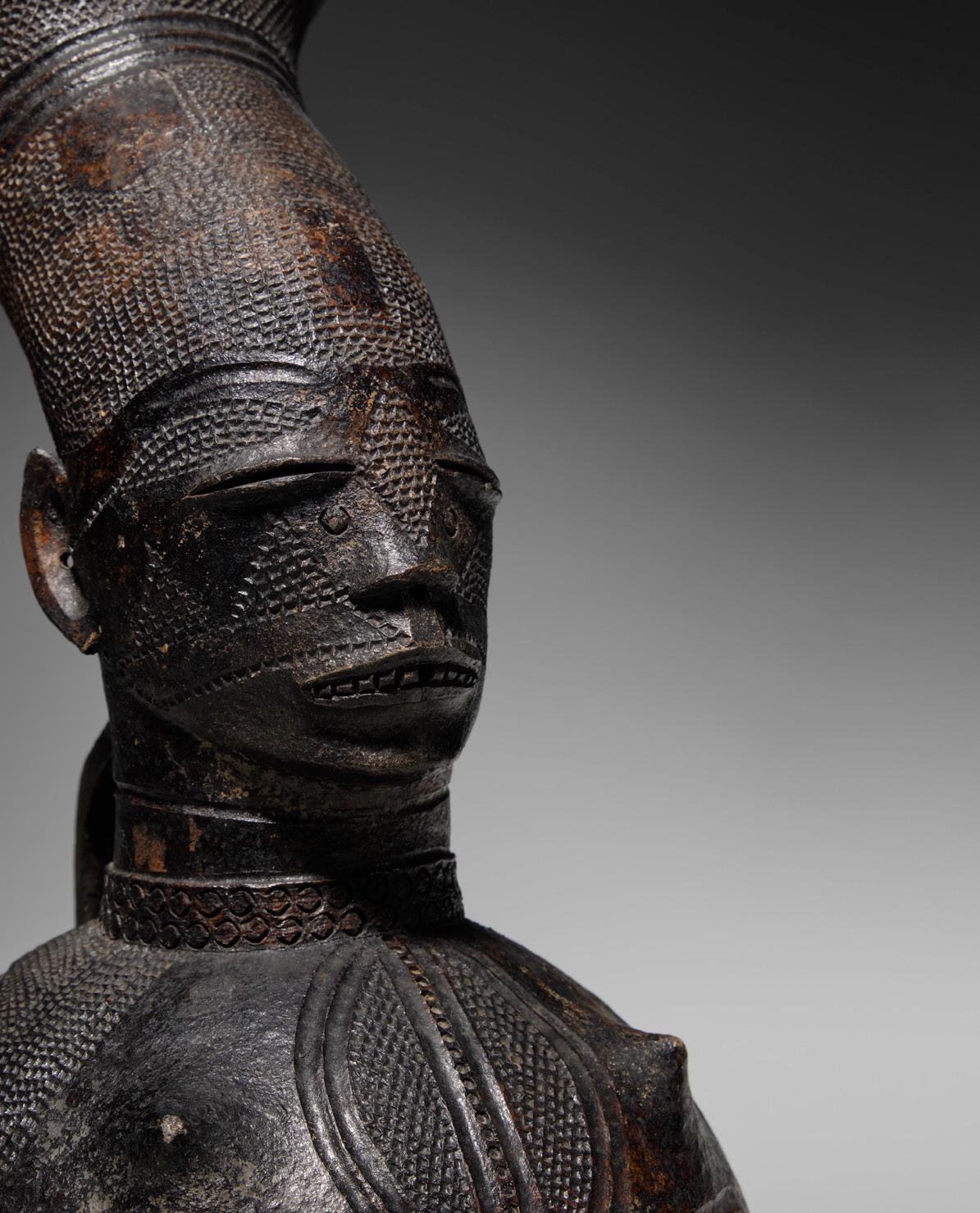
This anthropomorphic jar is an exceptional and brilliant illustration of the unseen heights in skill Mangbetu potters achieved during this period. The jar's rounded volume flows seamlessly into a graceful woman's head in a smooth undulating motion.
The superbly rendered noble features of the woman’s head, with typically elongated skull and sophisticated hairdo bear witness to the Mangbetu ideal of beauty.

D.R. Congo - 19th C. Wood, 70 x 36 cm

Provenance: Didier Claes, Brussels Private collection, Brussels
€ 2000 - 3000
D.R. Congo
Wood and brass tacks, 56 cm
Provenance:
Lucas Ratton, Paris Private collection, Brussels
€ 1000 - 1500
Burkina Faso
Wood and fabric, 24,5 cm
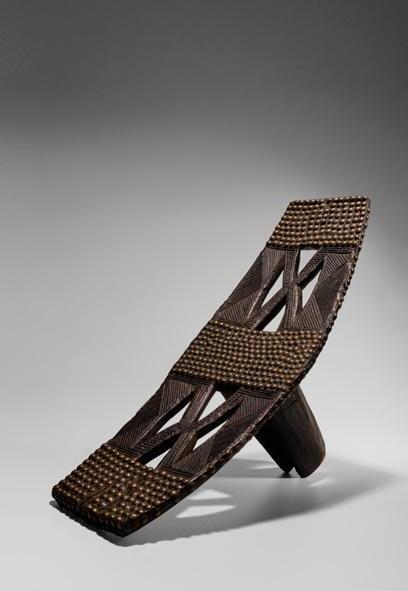
Provenance:
Galerie Lucas Ratton, Paris Private collection, Brussels
€ 1000 - 1500
 035 . Kuba Backrest
036 . Mossi Whistle
035 . Kuba Backrest
036 . Mossi Whistle
037
Ethiopia Wood, 18,5 cm
Provenance: Michael Rhodes, New York Marc and Denyse Ginzberg, New York Sale Bonhams, New York, African, Oceanic and Pre-Columbian Art, 15 May 2013, lot 197
Private collection, Brussels
Published:
Marc Ginzberg, African Forms, Skira Editore, Italy, 2000, p. 37 (ill.)
€ 800 - 1200
038
South Africa
Wood, 15 cm
Provenance:
Kurt Delbanco collection, New York, (acquired prior to 1984-1985)
Leslie Sacks Collection (acquired in 2003)
Native Auctions, Brussels, African Art from the Leslie Sacks Collection, 22 October 2016, lot 157
Private collection, Brussels
Published:
Amanda M. Maples, African Art from the Leslie Sacks Collection, Refined Eye, Passionate Heart, Skira 2013, cat.7, ill. pp. 44-45
€ 2000 - 3000
Oromo Neckrest . Tsonga Headrest
D.R. Congo, 19th C. Wood and brass tacks, 36 x 25 x 45 cm
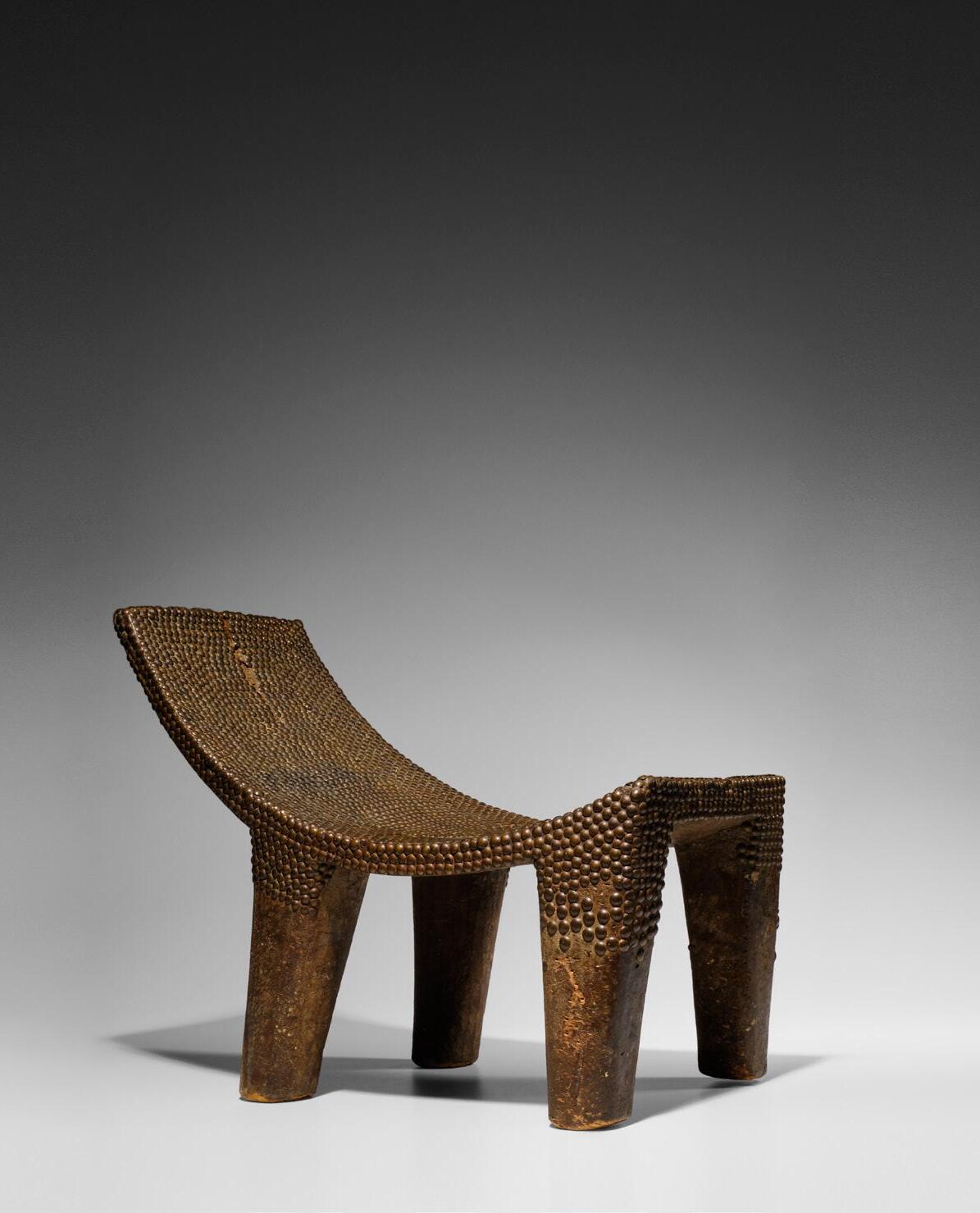
Provenance:
Jeanne Walschot, Brussels
Jacques and Denise Schwob (1916-2008), Brussels
By descent
Christie's, Paris, Art d'Afrique, d'Océanie et d'Amérique du Nord, 23 June 2015, lot 68
Patrick Mestdagh, Brussels Private collection, Brussels
€ 15 000 - 20 000
039 . Ngombe SeatExceptional “Ekele” or chief’s seat.
Carved from a single piece of wood, it is studded with brass tacks in an intricate geometric pattern covering the better part of the top and the upper part of the feet, creating a visually and tactilely alluring textured surface.
Brass tacks became available in the 1880s and were eagerly put to use for decorative purposes by artists and craftsmen to embellish stools of a type that had been in use since at least the 16th century. Since they were an expensive import from Europe, the use of brass tacks enhanced the prestige and importance of the chief’s seat.
A similar Ekele belonged to the Yves Saint Laurent and Pierre Bergé collection (sold at Christie’s in 2009).
The stark and elegant shape of this type of Ngombe seat was also the direct inspiration for a carved and lacquered stool designed by Pierre Legrain for Pierre Doucet in 1923 (now in the collection of the Virginia Museum of Fine Arts, inv.92.5), who saw a similar stool in the collection of the Parisian fashion designer Jeanne Tachard.
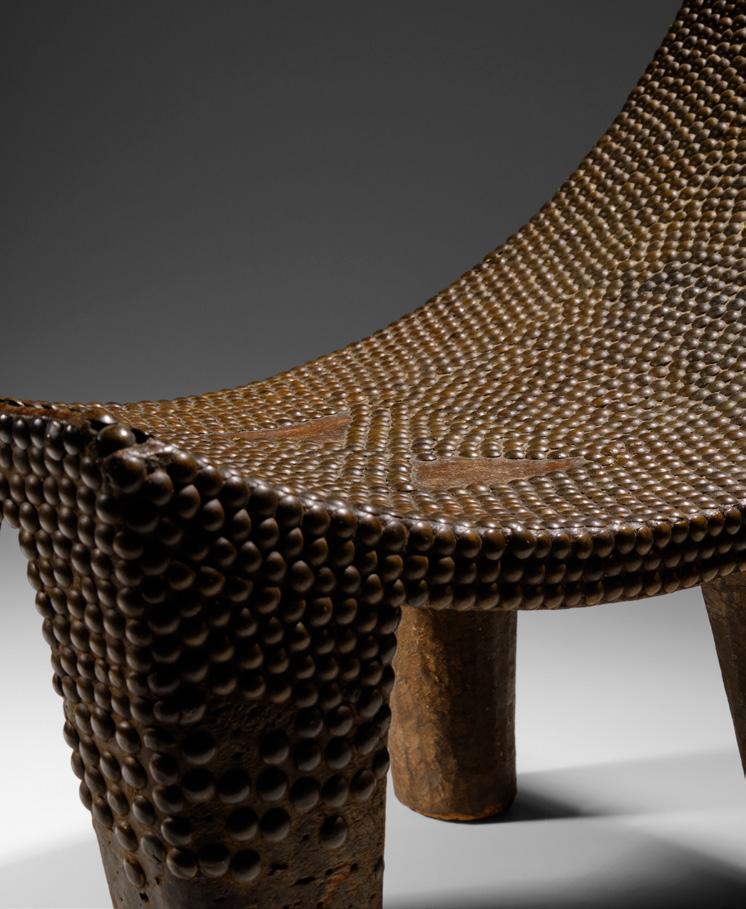
040 Penu Pounder Society Islands, Tahiti - 18th C. Basalt stone, 15,2 cm

Provenance:
Mark Blackburn, 1990's Private collection, California
Michael Hamson Oceanic Art, Palos Verdes Private collection, Brussels
€ 5000 - 7000
Made of a single piece of black basalt stone, this penu’s rich shiny patina is ample proof of its repeated use over generations. Topped by a cross-bar it is of the so-called maupiti type. In this elegant exemplar, the cross-bar is further decorated by two raised parallel ridges.
Used to pound breadfruit or root vegetables into poi or popoi, the staple food in the Society Islands and other parts of Oceania, pounders like this were among the most valuable and important of household items.
041 Poul Kjærholm (Danish, 1929 - 1980)
PK 61 Coffee Table - 1956
Steel and Cipollino marble, 31 x 86,5 x 86,5 cm First Edition E. Kold Christensen (before 1981) Stamped EKC

Literature:
Michael Sheridan, The Furniture of Poul Kjaerholm: Catalogue Raisonné, Gregory R. Miller & Co., New York, 2007, pp.78-81
€ 6000 - 8000
042 Pende Mask
D.R. Congo Wood, fibers, fabric, and pigments 33 cm
Provenance: Binoche et Giquello, Paris, 10 December 2014, lot 15 Private collection, Brussels
€ 8000 - 12 000
Mbuya, a similar Phota (or Pota) mask from the same workshop, collected in the early 20th C., is published in “L’Art Pende” by Léon de Sousberghe (Académie Royale de Belgique, Brussels, 1959), illustrated under n°32. Both the formal composition of the face and the way the hairdo is made are similar to the mask presented here.
This type of mask was not used as a face mask but was worn on top of the dancer’s head, like a visor. Photas played an essential role during the mukanda initiation rites.
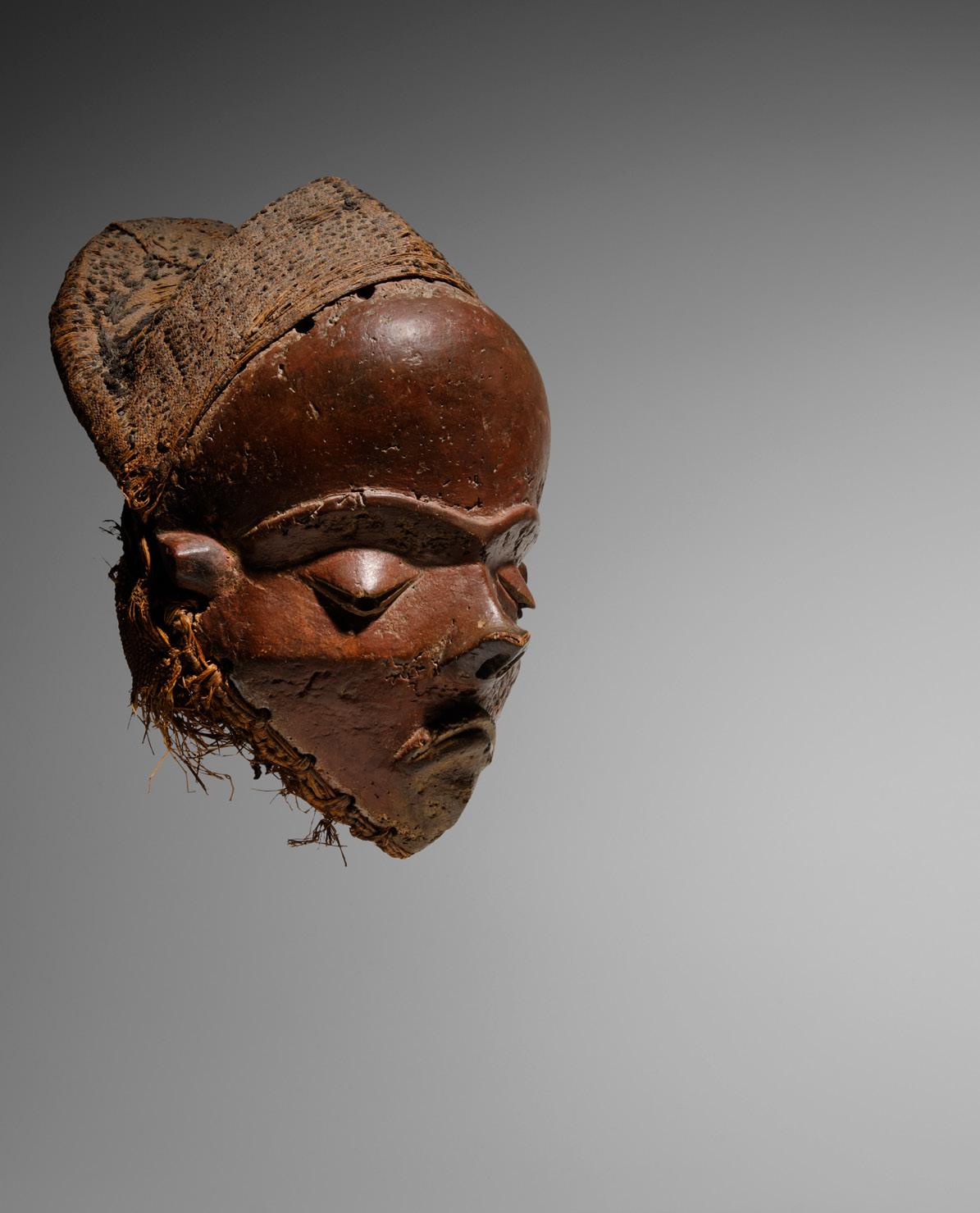
043 François Morellet (French, 1926 - 2016)
Jazz Line - 2007
Triptych
Enamel on aluminum 65 x 65 cm each
Edition Galerie Jean Brolly, Paris
In an edition of 8 numbered copies and 4 épreuves d'artiste, this triptych bears the number 5/8

Provenance:
Galerie Jean Brolly, Paris Private collection, Brussels
€ 10 000 - 12 000
Table PK 56 - (1974)

Flint-rolled marble and chrome-plated steel, 64 x 140 cm
First Edition
Manufactured by E. Kold Christensen
Literature:
Michael Sheridan, The Furniture of Poul Kjaerholm: Catalogue Raisonné, Gregory R. Miller & Co., New York, 2007, pp.170-171
€ 30 000 - 40 000
"This table was developed to accompany the PK 13 cantilevered armchair, and with it Kjærholm effectively reworked his round dining table of 1963, PK 54. The dimensions of the stone top were identical to those of PK 54, which allowed it to be extended with the PK 54A extension leaves. But the bases of the two tables differed significantly in shape and construction. The base of PK 56 was constructed of three rectangular frames that formed an equilateral triangle. The shift from orthogonal to triangular geometry had implications for both the table's detailing and its overall appearance. (…)

By reducing the number of vertical elements from four to three, Kjærholm increased the contrast between base and top and amplified the effect of a suspended stone disk. PK 56 was produced by Kold Christensen from 1976 to 1978 with tops of flint-rolled light marble." (Michael Sheridan, op.cit., p.171)
The PK56 table was in production for a very brief period (1976-1978) and is one of the rarest and most coveted furniture pieces Poul Kjærholm designed.
Sentani Lake region - c.19th C. Wood, 48 cm
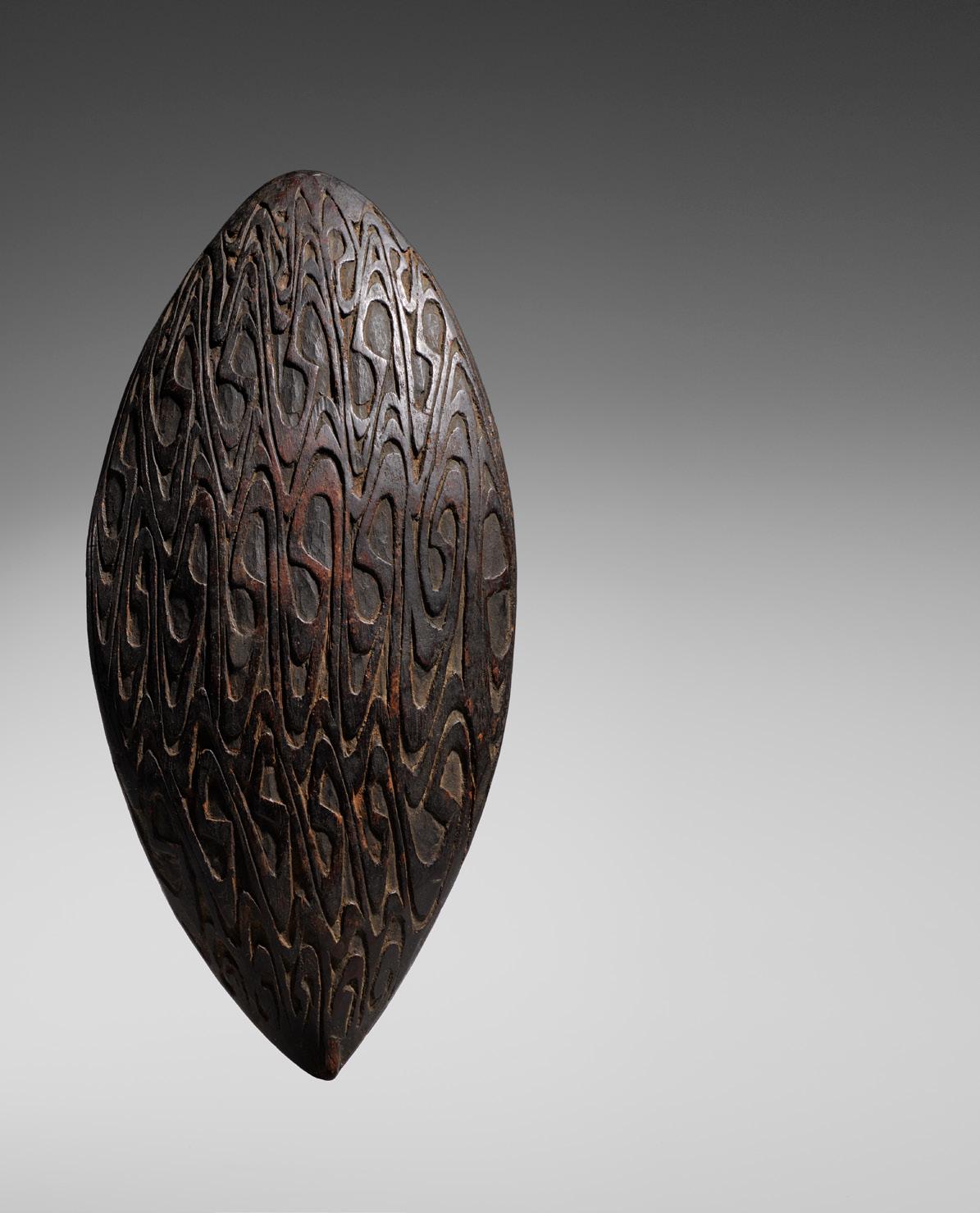
Provenance:
American army officer Woodruff Bryne (serving in New Guinea from 1943 to 44)
Thence by descent
Michael Hamson Oceanic Art, Palos Verdes Private collection, Brussels
€ 2000 - 3000
Shallow serving bowl with an elaborately carved pattern of interlocking scrolls on the bottom surface.
Library table - 1958
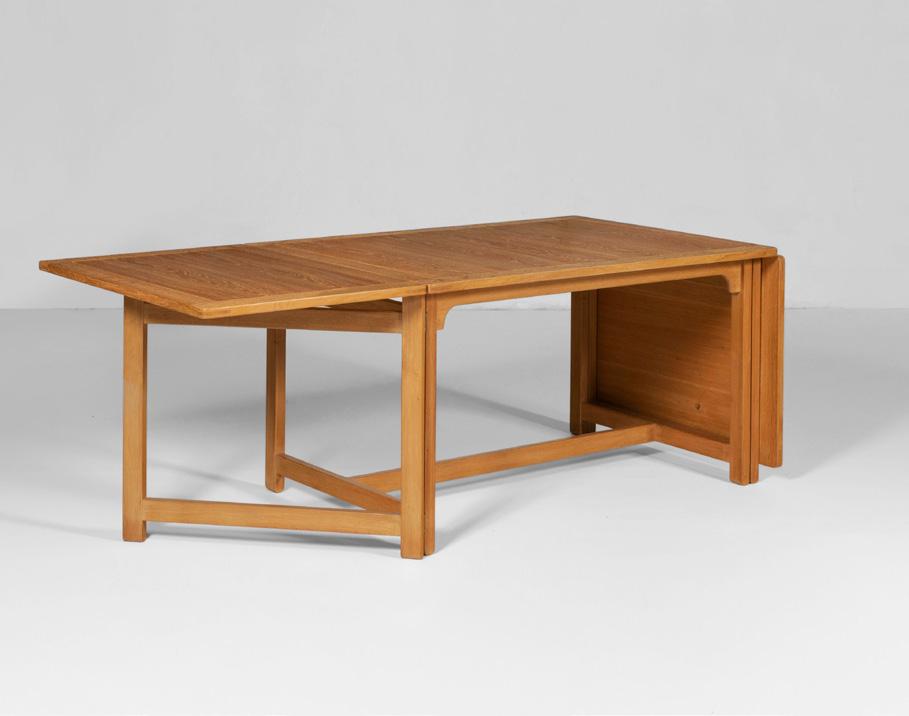
Oak
70 x 124 (248) x 93 cm
Manufactured by P. Lauritsen, Ålestrup, Danmark
Provenance:
The table was originally designed for the library of the Danish Design Museum, Copenhagen
Exhibited:
Copenhagen Cabinetmakers' Guild Exhibition, 1958
Literature:
Grete Jalk [ed.], “40 years of Danish furniture design 1927 - 1966”, vol. 4, pp. 66 - 67.
Arne Karlsen, “Møbler tegnet af Børge Mogensen”, p. 87.
€ 3000 - 5000
046 Borge Mogensen (Danish, 1914-1972)047 Toyen
(Marie Cermínová - Czech 1902 - 1980)
Il était la proie des images - 1956 Gouache on paper, 20,5 x 20,5 cm Signed lower right

Provenance:
Sale Calmels-Cohen, Paris, 22 June 2006, lot 165 Private collection, Brussels
Published:
André Breton, Le Surréalisme même, n°1, Paris, October 1956, p.33 (ill.)
€ 5000 - 7000
Published in the first issue of “Le Surréalisme même”, published by the Jean-Jacques Pauvert bookshop. It was one of the major journals of post-war Surrealism through which André Breton sought to give a new impetus to the movement by bringing together various generations of artists and those close to the movement. It had only five issues (October 1956 - spring 1959).
Santa Cruz, Solomon Islands
Tridacna shell and tortoiseshell
19 cm Ø
Provenance:
Todd Barlin collection, Sydney
Elizabeth Pryce collection, Sydney
Sale Sotheby’s, Paris, Collection

Elizabeth Pryce – L’art de vivre en Océanie, 10 October 2018, lot 80
Private collection, Brussels
€ 2000 - 3000
049 . Philip Akkerman (Dutch, 1957)
Self Portrait - 1995
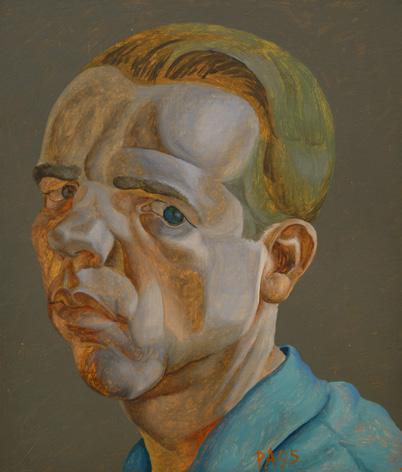
Oil on panel, 40 x 34 cm
Initialed and dated lower right
Provenance: Private collection, Belgium
€ 2500 - 3500
050 . Philip Akkerman (Dutch, 1957)
Self Portrait - 2003

Oil on panel, 40 x 34 cm
Signed and dated lower right
"Phly 2003"
Provenance: Private collection, Belgium
€ 2500 - 3500
Huan Gulf, Morobe Province, Papua New Guinea
Early 20th C.
Ovula shells, nassa shells, plant fiber, and paint, 22 cm
Provenance:
Bills Evans, Sydney
Collection Elizabeth Pryce, Sydney
Exhibited:
Sydney, Macleay Museum, Adorned. Traditional Jewellery and Body Decoration from Australia and the Pacific, 23 March 1999 - 30 January 2001, cat.31.1
Published:
A. Edmundson, Chris Boylan, Adorned. Traditional Jewellery and Body Decoration from Australia and the Pacific, Macleay Museum, The University of Sydney, Sydney, 1999, p.45, ill. plate 31.1
€ 1000 - 1500
 051 . Huon Gulf Ornament
051 . Huon Gulf Ornament
052 . Marcel Wolfers (Belgian, 1886-1976)
Inkwell - 1920 - 1930
Lacquered wood and silver
9 x 14,2 x 16 cm
With golden plaquette on verso: "Marcel Wolfers Piece Unique"
Provenance: Private collection, Brussels
€ 6000 - 8000
As one of the foremost representatives of art deco applied arts, Marcel Wolfers gained international esteem for his skillfully executed lacquered objects, an oriental technique he mastered like no other in Belgium. In this sale, we present three lacquered objects by him, amongst which this extraordinary inkwell, where he combines lacquered wood with silver, as well as an urn (lots 55 and 82). These pieces are outstanding in their sense for proportions and pure shapes that bring out all the beauty and richness of the lacquerworks warm colors.
We would like to thank M. Werner Adriaenssen for confirming the authenticity of the works by Marcel Wolfers.

Siberia
Wood, 35,5 cm

Provenance:
Galerie Frédéric Rond, Paris
Arnaud Kurc collection, Paris Private collection, Belgium
€ 5000 - 7000
053 . Nanai Figure054 . Exceptionnaly Large Nanai Figure
Siberia Wood and glass beads, 70 cm
Provenance: Tischenko Gallery, Helsinki
Private collection, Belgium
€ 40 000 - 60 000
Among the indigenous people of Siberia, the Nanais live in the Russian far east, mainly in the region of the Amur River, as well as on the banks of the Ussur and the Girin Rivers and further to northeast China on the Sungar River. Their culture can be traced back to the Neolithic period. At the heart of their culture, we find an animistic worldview, and the sculpture presented here plays its role in their shamanistic practice. Anthropomorphic sculptures like these, with distinctly pointed heads represent the Kalgama spirit. They were used during healing seances and rites to ensure successful hunting and fishing.
At the beginning of the 20th C. Nanai sculptures were greatly admired by the Russian avant-garde artists who appreciated their stark formal qualities. Similar summarily carved figures with glass beads for eyes belong to the Vladimir Arseniev collection now at the Museum of Ethnography in Saint-Petersburg. Most of them can be dated to the end of the 19th and early 20th centuries.


Urn with Lid - 1928

Lacquered wood, semi-precious stone, and mother of pearl
29 cm
Inscribed with name and date underneath
Provenance: Private collection, Brussels
€ 8000 - 12 000
The signature and date underneath this vase are ones that can be found on a large number of lacquerwork pieces by Marcel Wolfers. According to Werner Adriaenssens, it is not unlikely that all these pieces have been marked as such at the time of the move of the workshop in 1928, even though some of them were actually designed and created before.
Provenance:
€ 4000 - 6000
 056 . Taino Anthropomorph Axe Dominican Republic Stone, 20,5 cm
Joseph G. Gerena Fine Art, New York Bruno Gay collection, Paris Private collection, Belgium
056 . Taino Anthropomorph Axe Dominican Republic Stone, 20,5 cm
Joseph G. Gerena Fine Art, New York Bruno Gay collection, Paris Private collection, Belgium
057 Taino Ceremonial Axe
Dominican Republic
Greenstone, 28 cm

Provenance:
Alexandre Bernand, Paris
Private collection, Belgium
€ 4000 - 6000
Taino petaloid (petal-shaped) celts like the one presented here can be found all throughout the ancestral Caribbean islands. Some were actually used as tools in agriculture, but highly polished axes of more important size like this one were used in ceremonial rites or given as funeral offerings. They were symbols of political power. The greenstone used for this type of axes was imported and was specially chosen for its color, symbolizing water and sprouting plants. Its trade spanned an area from the Caribbean mainland all through Mesoamerica.
Second half 15th, early 16th C. Polychromed wood 48,5 cm

Provenance: Private collection, Belgium
€ 2000 - 3000
058 Christ Child Blessing Mechelen (Malines), Belgium(French-Belgian, 1847-1928)
Shell Table Lamp / Sconce - 1922-23

Alabaster and bronze, 19 cm
Foundry Maison Fonson, Brussels
With a handwritten certificate by Renauld Chambon, grandson of the artist.
The French architect Alban Chambon developed his professional career in Belgium where amongst his best-known realizations were the Casino-Kursaal in Ostend (destroyed during the second WW) and the Hôtel Métropole in Brussels.
059 Alban Chambon € 800 - 1200Provenance
€ 6000 - 8000
 060 Anthropomorph Indo-Gangetic Plains Idol Uttar Pradesh, India
Metal, 21 x 26,5 cm
Galerie Frédéric Rond, Paris Collection privée, Belgique
060 Anthropomorph Indo-Gangetic Plains Idol Uttar Pradesh, India
Metal, 21 x 26,5 cm
Galerie Frédéric Rond, Paris Collection privée, Belgique
061 Dogon Niongom Ancestor Figure Mali, 15th - 16th Century Wood, 91 cm

Provenance: Franco Monti collection, Milan - Lugano (acquired in situ 1960s) Sommaruga collection, Bellinzona, Switzerland Anna and Antonio Casanovas, Galleria Arte y Ritual, Madrid Galerie Joaquin Pecci, Brussels Galerie Adrian Schlag, Brussels Montagut Gallery, Barcelona (2019) Private collection, Spain
Exhibited: Hogon, Paris, Montagut Gallery, Parcours des Mondes 2019, 10 - 15 September 2019 Montagut Gallery, BRAFA Art Fair, Tour & Taxis, Brussels, 26 January - 2 February 2020
Published:
Elena Martinez-Jacquet, Hogon, Galerie Montagut, Barcelona, 2019, fig. IX
€ 20 000 - 30 000
The Niongom occupied the southern cliff of the Bandiagara plateau before the arrival in the 15th century of the DogonMande. Ancestor figures like to one presented here were found in abandoned altars and are exceedingly rare. The advanced stage of erosion of the figure testifies to its great age but has not in the slightest way diminished the hieratic power that it exudes.
Niongom sculptures of stylized human figures are generally considered to have been at the origin of classical Dogon art.
South Sudan
Ivory, 23 cm

Provenance:
Pierre Dartevelle, Brussels
Private collection, Brussels
Published:
Claude-Henri Pirat, Du Fleuve Niger au Fleuve Congo. Une aventure africaine, Primedia, Arquennes, 2014, pp.193, 256, cat.74 (ill.)
€ 4000 - 6000
Exceptionally large dinka bracelet, made out of two parts from an elephant's tusk that were cut longitudinally. Joined by a barely visible vegetal link, the edges alongside the joined parts are subtly decorated by tiny circles, conveying furthermore to this beautifully aged bracelet a rare elegance. With Cites BE2023..
062 . Suberb Dinka Bracelet063 Francisco de Zurbarán (Spanish, 1598-1664)
Studio or Follower Santa Marina - 17th C. Oil on canvas, 105 x 77 cm
Provenance: Private collection, Belgium
€ 6000 - 8000
Among the paintings that can be attributed with certainty to Zurbarán, we find at least two that depict the martyr Santa Marina, also known as Saint Margaret of Antioch: one belongs to the Carmen Thyssen collection in Malaga, another to the National Gallery in London (inv. NG1930).
This type of painting of saints had grown exceedingly popular in Spain’s early decades of the 17th C. According to Emilio Orozco Díaz (Temas del Barroco de poesía y pintura, 1947), Zurbarán’s saints, and those executed by his studio and followers, are actually portraits “a lo divino” – that is, of ladies who wished to be represented as the saint whose name they bore.
Besides the two aforementioned versions by Zurbarán himself, an extensive number of copies was produced, not in the least by his studio. Amongst the collections that hold variants of Saint Margaret after Zurbarán, we can mention the Konstmuseum in Gothenburg, The Royal Collection Trust in London, and the Barber Institute in Birmingham.


Mali
16th - 18th Century
Wood, 100 cm
Provenance:
Günther Steffens collection, Johannesburg, South Africa
Private collection, The Netherlands, 2015-2018
David Serra Fine Tribal Art, Barcelona
Private collection, Spain
Exhibited:
David Serra Fine Tribal Art, Paris, Parcours des Mondes, Más de uno, 11 September - 16 September 2018
Published:
Françoise Barrier, Más de uno, David Serra Fine Tribal Art, Barcelona, 2018, pp.20-21 (ill.)
€ 20 000 - 30 000
“Aduno koro” or “ark of the world" receptacle that was typically part of family altars dedicated to Amma, the Creator. Of rectangular shape with a protruding horse’s head on one side, and tail on the other, its shape refers to the story of a mythical ark that Creator Amma sent from heaven to inhabit the earth. It contained everything considered essential to life. The figures on the sides of the vessel evoke this journey that led to the bringing of life to earth.
065 Netherlands (c.1550)
Der Triumph der Zeit
[The Triumph of Time]
Oil on panel, 44,8 x 36 cm
Painted inv. nr of the Wallraf-Richartz Museum on verso: 557 and 174 H Handwritten label on verso with transcription of museum's catalog
Provenance:
Ferdinand Franz Wallraf (1748-1824) collection, Cologne
Wallraf-Richartz Museum, Cologne (by bequest since 1824/25) Count Adelmann von Adelmannsfelden collection (bought from the museum in 1924) Sale, Stuttgart, 1973 Private collection, Belgium
Published:
Dr. Wolfgang Müller von Köningswinter, Verzeichniss der GemäldeSammlung des Museums Wallraf-Richartz, M. DuMont-Schauberg, Cologne, 1862, p.73, cat.411 (titled "Die Zeit reitet auf einem Hirsch") J. Niessen, Verzeichniss der Gemälde-Sammlung des Museums Wallraf-Richartz in Köln, Chr. Gehly'schen Buchdruckerei, Cologne, 1869, p.93, cat.557
Hiltrud Kier, Frank Günther Zehnder, Susanne Blöcker, Nicole Buchmann, Gisela Goldberg, Roland Krischel, Lust und Verlust II. Corpus-Band zu Kölner Gemäldesammlungen 1800-1860, Wienand Verlag, Cologne, 1998, p.144, cat.285 (ill.)
€ 20 000 - 30 000
This anonymous painting used to belong, together with “The Triumph of Love”, to the collection of the Walraff-Richartz Museum in Cologne. In the museum’s inventory from 1869, it is mentioned as “Holbein’s School”, in the 1998 study "Lust und Verlust II", its suggested origin is Dutch.
The subject refers to Petrarca’s “Trionfi”, a poem in six parts that includes besides the two aforementioned ones the triumphs of Chastity, Death, Fame, and Eternity. It is most likely that the painting presented here was part of a full circle of the six “Triumphs”, but the actual whereabouts of those other five panels is unknown.
We would like to thank Dr Roland Krischel, Head of the Department of Medieval Painting at the Wallraf-Richartz-Museum & Foundation to have provided us with the details on the provenance of this painting

066 Becherpokal (1801)
Chalice with lid
Augsburg, Germany
Silver and gilded silver, 21,5 cm With pine cone and letter "M" silver mark
Provenance: Private collection, Belgium
€ 3000 - 5000
067 Becherpokal (Early 19th C.)

Chalice with lid Germany
Silver and gilded silver, 20 cm
Provenance: Private collection, Belgium
€ 2000 - 3000
068
South Sudan
Ivory, copper, and leather, 34 cm
Provenance: Private collection, Brussels
Published:
Claude-Henri Pirat, Du Fleuve Niger au Fleuve Congo. Une aventure africaine, Primedia, Arquennes, 2014, pp.193, 256, cat.73 (ill.)
€ 2000 - 3000
The Shilluk people are closely related to the more common South Sudanese ethnic groups, the Nuer and Dinka (their neighbors to the south and east, respectively). Shilluk artifacts are exceedingly rare, and this refined long stemmed spoon in ivory testifies to the height of their craftsmanship. The petal-shaped bowl is crisply carved into a fine point connecting with the stem. On the back, the stem smoothly continues till halfway into the bowl, as if sinking into it. The golden patina that betrays its age, and perfect state of conservation testify to its importance.
With Cites BE2023..
 Rare Shilluk Spoon
Rare Shilluk Spoon
Bissagos Islands
Wood, 78 cm
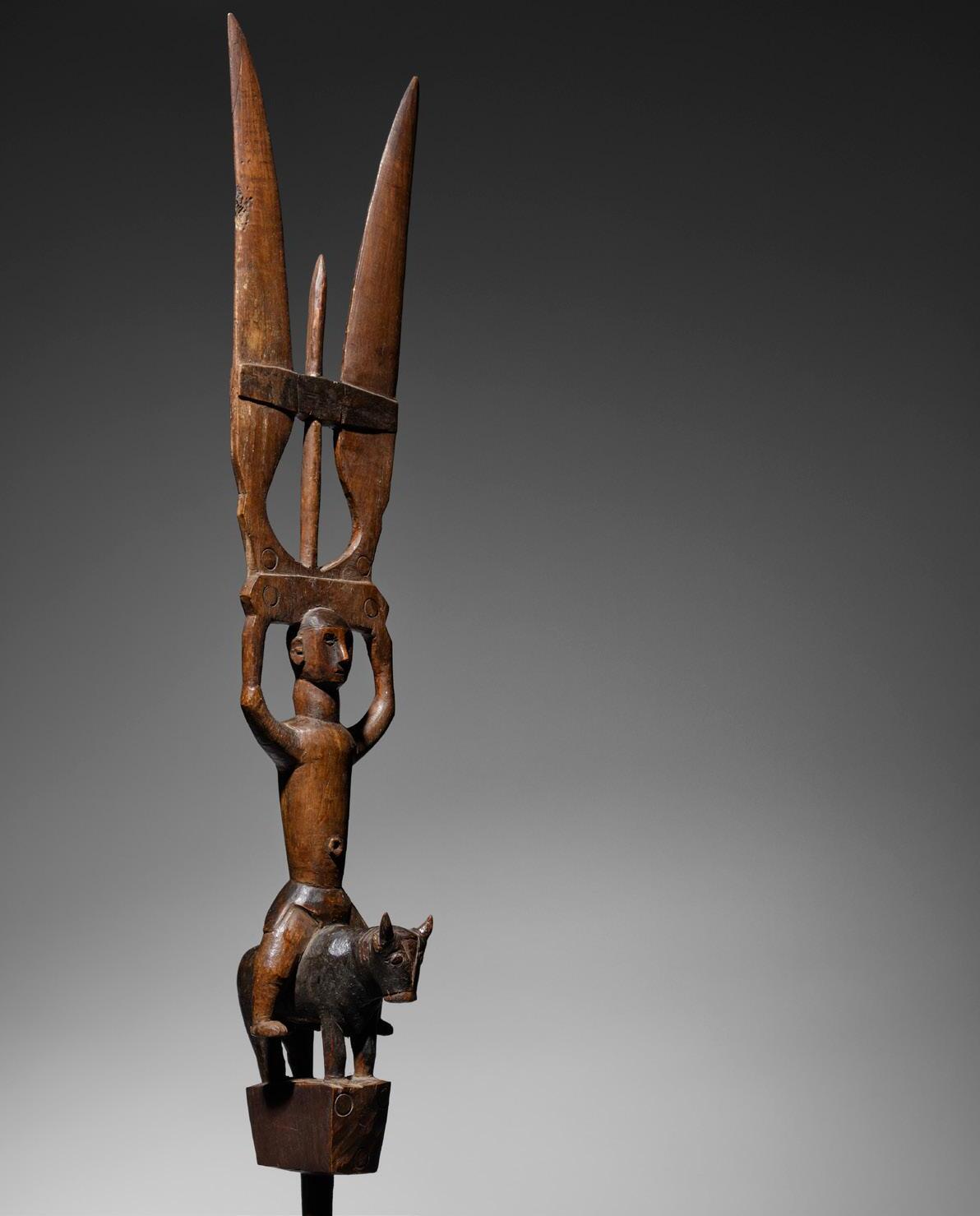
Provenance:
Collection of Dr. Henrique Nunes, Alentejo, Rui Castro collection, Lisbon
€ 2000 - 3000
070 Jean-Jacques Gaillard (1890 - 1976)
Mon père passe dans son souvenir - 1930 Oil on panel, 80 x 80 cm Signed and dated lower right

Provenance:
Family of the artist, Brussels Private collection, Brussels
Published:
Alphonso Enriquez de Villegas Diaz, Xavier Canonne, Jean-Jaques Gaillard, Marot, Brussels, 2014, p.58 ill. 25, p.423
Exhibited:
Palais des Beaux-Arts, Brussels, Salon de Printemps, 14 April - 6 May 1934, cat.38 (label on verso)
Galerie Georges Giroux, Brussels, Jean Jacques Gaillard, 10 - 28 May 1947, cat.56
€ 5000 - 7000
071
Mali
Wood, 107 cm
Provenance: Private collection, Spain
€ 10 000 - 15 000
Kate Ezra in Colleyn 2001: "The Jo and Gwan figures are larger and more massive than other Bamana figures. Often standing three to four feet tall, they have thick cylindrical torsos, broad shoulders, and smoothly curved ovoid heads. Their arms and legs connect to shoulders and hips in a fluid manner, unlike the abrupt angular transitions seen in many other types of Bamana sculpture, including the Nyeleni sculptures used by new Jo initiates in their performances [...]. The Jo and Gwan sculptures represent both females and males, whereas other types of Bamana sculpture are almost exclusively female. They depict people in a variety of postures and guestures and wearing or carrying a diverse array of objects. [...] Some of the figures, both female and male, wear or carry objects associated with occult powers, such as amulet-studded hats, animal horns filled with spiritually charged substances, and protective charms in the form of belts, packets hanging around the neck or under the arm, and pouches slung across the chest."
Bamana. The Art Of Existence In Mali, Colleyn, Jean-Paul, New York / Zurich / Gent, 2001, p.131
 Bambara Figure
Bambara Figure
Portique - c.1995
Brass
44 x 16 x 6,5 cm
Initials on the left side, lower edge
Provenance: Private collection, Brussels
€ 4000 - 6000
Even in modestly scaled sculptures like the one presented here, Jacques Moeschal’s double training as a sculptor and architect cannot be overlooked. Instead of referring to our surroundings, Moeschal’s sculptures articulate space itself. They guide us in our perception of the space where they are placed. The recurring theme of doors and portals is as such at the very core of his practice.
 072 Jacques Moeschal (Belgian, 1913 - 2004)
072 Jacques Moeschal (Belgian, 1913 - 2004)
Mali Wood, 37 cm
Provenance: Private collection, France
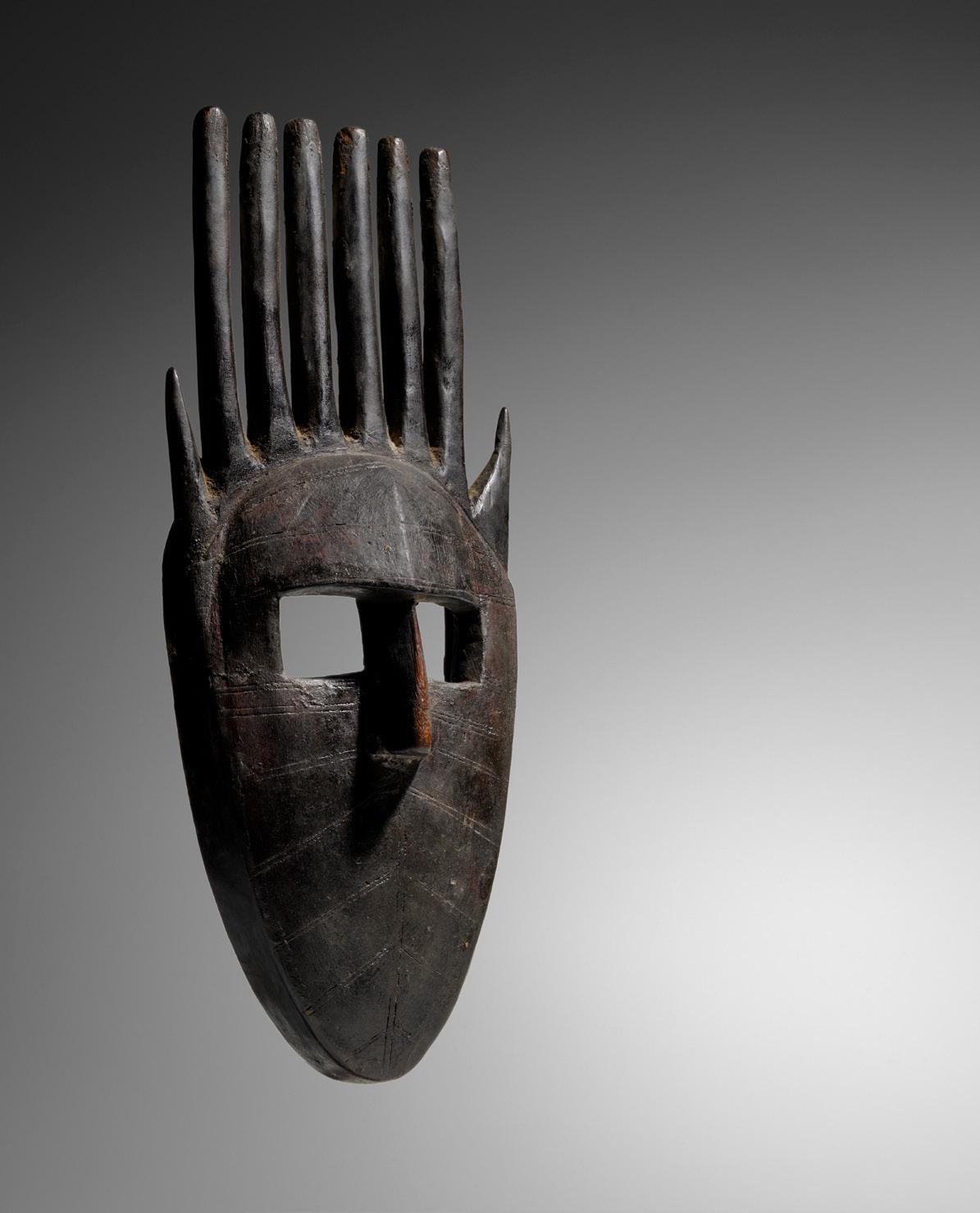
Eric Hertault, Paris
Private collection, Spain
Published: L'Émotions des Formes: Plastique et Dynamique Africaines, Paris, Éric Hertault, 2017, pp.21-22 (ill.)
Exhibited: Éric Hertault, Paris, Parcours des Mondes, 12 - 17 September 2017
€ 6000 - 8000
073 Bambara MaskLandscape with Resting Shepherd
First quart of the 17th C. Oil on panel, 17 x 13 cm
Provenance: Private collection, Brussels
Landscape painting in the typical manner of the Antwerp school with a solitary shepherd figure resting. The resting sheep close by might refer to the theme of the good shepherd, but it is clear that the painter wanted to focus on the landscape that upon closer inspection is crowded with a diversity of animals: birds of different kinds, a rabbit, a drinking deer…
The unusual support of a panel in fruitwood testifies to the frequent exchanges that existed between Antwerp and Bavaria, where this type of panel was commonly used. The best-known example of these contacts is the one between the Munich painter Hans Rottenhammer and Jan Breughel the Elder.
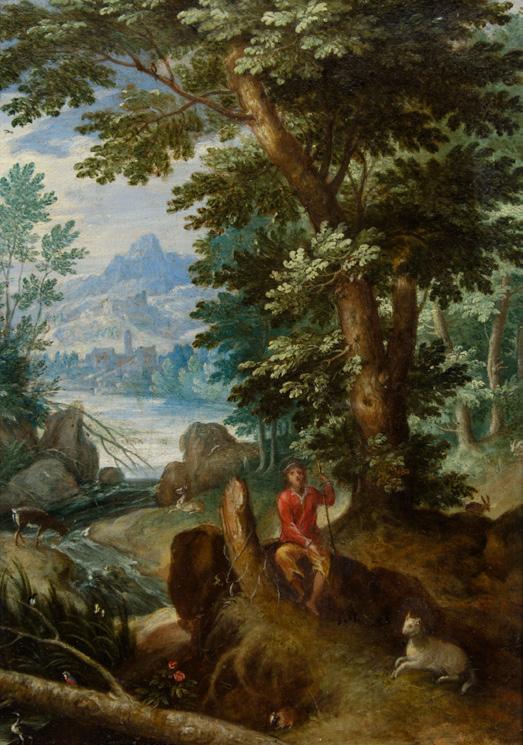

075 Luis Tomasello
(Argentinian, 1915 - 2014)
Atmosphère chromoplastique n°334 - 1973
acrylic on resin on Formica panel 100 x 100 x 9 cm title, number, date, dimensions, and signature on verso
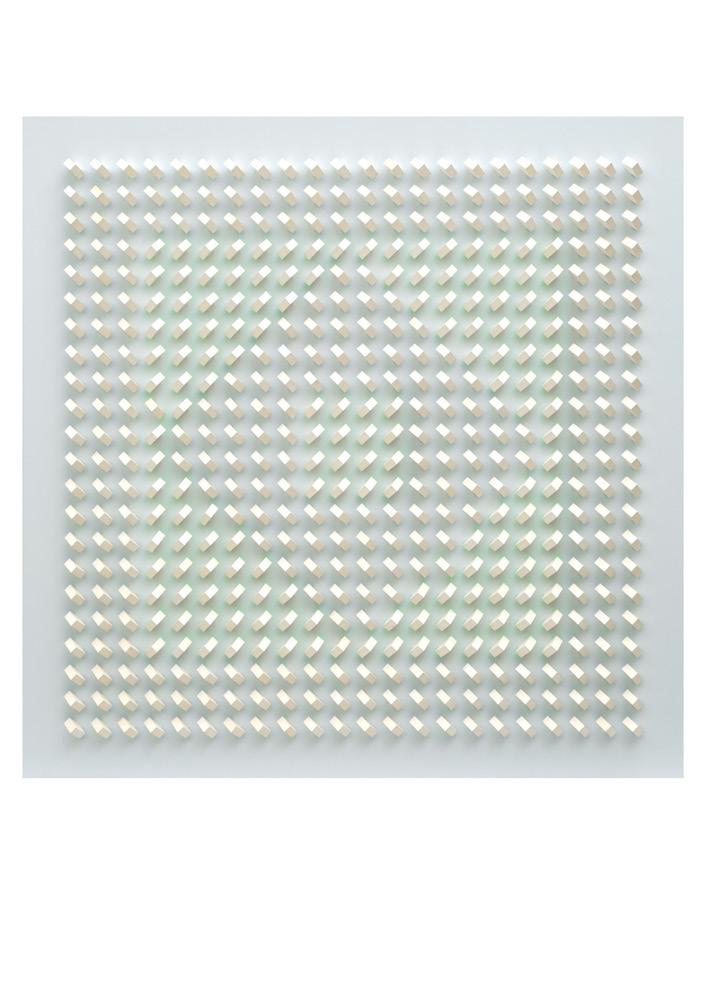
Provenance:
Private collection, Belgium
Included in the inventory of the archives of the artist
€ 30 000 - 50 000
Upon his arrival in Paris in 1957 Luis Tomasello joined the company of his fellow Latin-American artists amongst whom Rafael Soto and Carlos Cruz-Diez with whom he shared his interest in the potential of expression through light and motion. As a great admirer of the New York paintings by Mondrian, and after having been very impressed by the stained windows of the Chartres cathedral, Tomasello’s quest for expression through light and color in an evanescent, almost immaterial way ultimately lead to his so-called “Atmosphères chromoplastiques” in the early 1960s. These are monochrome panels, covered with small, mostly identical polyhedra, that through their alternating positions create a play of light and shadow, and a sense of motion as the viewer walks past it. But more subtlely, the parts of these volumes that are hidden from the eye in frontal view are painted in fluorescent primary colors that reflect on the white background, adding a colored halo around the white volumes. Atmosphère chromoplastique n°334 with its blue and green colors is as complex and subtle as any of Tomasello’s reliefs get.

Mali, Bamana
Wood, 84 x 22 cm
Provenance:
Baron F. Rolin collection, Brussels - New York
Pierre Dartevelle, Brussels
Claude-Henri Pirat collection, Brussels Private collection, Brussels
Published:
Anne-Marie Bouttiaux, Persona, masques d'Afrique: identités cachées et révelées, Royal Museum for Central Africa, Tervuren / 5 Continents Editions, Milan, 2009, p.199 (ill.), p.201



Jean-Paul Colleyn, Bamana, 5 Continents Editions, Milan, 2009, p.96, pl.39 (ill.)
Claude-Henri Pirat, Du Fleuve Niger au Fleuve Congo. Une aventure africaine, Primedia, Arquennes, 2014, p.53, fig.19 (ill.)
Exhibited:
Tervuren, Royal Museum for Central Africa, Persona, masques d'Afrique: identités cachées et révelées, 24 April 2009 - 3 January 2010
€ 40 000 - 60 000
It is very rare to find a matching pair of Ci-Wara head crests, and it is only as a couple that these head crests take their full meaning.
The fawn on the female antelope's back is considered the embodiment of humanity. As a pair, the head crests symbolize the relationship between the masculine Sun and the female, nurturing Earth. The elaborate openwork rendering of the male antelope’s mane supposedly represents sunrays.
The style of this pair of Ci-Wara, is representative of the Ségou region in eastern Mali. Both crests are elaborately engraved with scarification patterns, typical for an older style.
The pronounced verticality, both in the antelope’s horns and their heads can also be found in the pair from the Maurice Nicaud collection in Paris that was sold by Binoche & Giquello on 31 March 2018 (lot 16).

Provenance: Galerie Adrian Schlag, Brussels Private collection, Belgium
€ 3000 - 5000
 077 Lobi Figure Burkina Faso Wood, 46,5 cm
077 Lobi Figure Burkina Faso Wood, 46,5 cm
Three Stools for the Ostend Post Office

1950-1952
Wood and metal, 55 x 35 x 39 cm
Manufactured by Fortuna, Ghent (mark on one of the stools)
Literature:
Mil de Kooning, Fredie Floré, Iwan Strauwen, Hedendaags design, Alfred Hendrickx en het fiftiesmeubel in België, OKV Edition 2000, pp.80-84 (ill.)
€ 2000 - 3000
(Belgian, 1854 - 1930)
Vase - 1896-1897
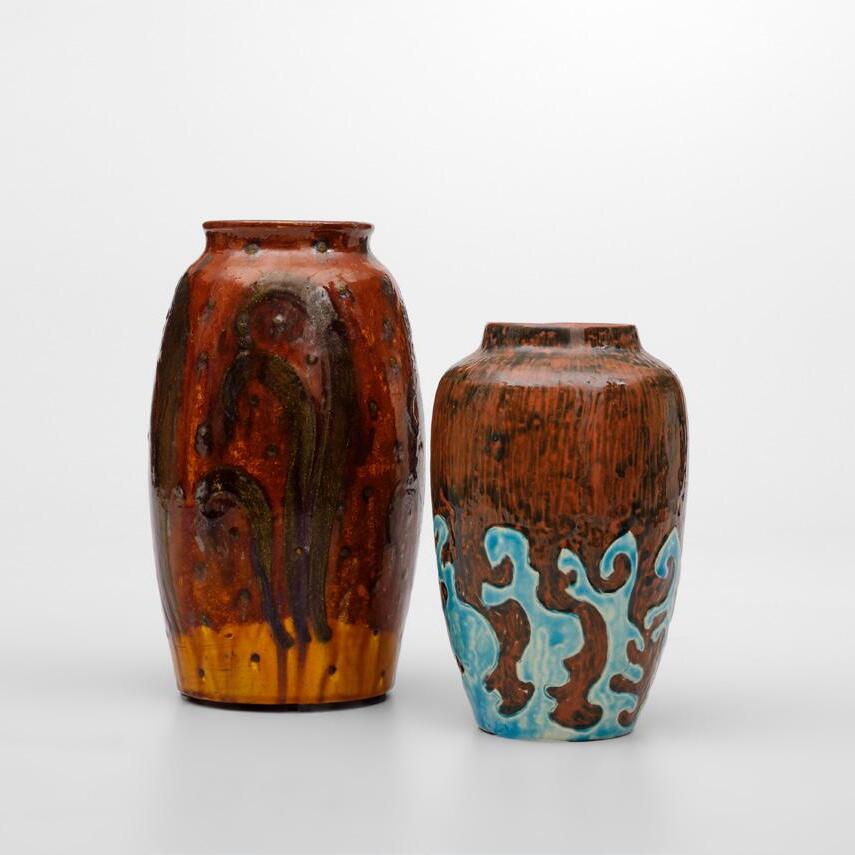
Glazed ceramic, 22 cm
Signed with initials underneath
Produced in Forges (partially legible underneath)
€ 600 - 800
(Belgian, 1869 - 1955)
Vase
Glazed ceramic, 18,5 cm
Signed underneath
€ 600 - 800
079 Alfred Willy Finch 080 Arthur Craco081 . Dan Spoon
Ivory Coast Wood, 62 cm

Provenance: Charles Boer collection, Paris
Maître Belloncle, Issy-les-Moulineaux, France, Art nègre: collection particulière de M. Charles Boer, 23 April 1975, lot 1 Mon Steyaert / De Gulden Snee, Brussels Private collection, Belgium (bought from the above in 1976)
Joaquin Pecci, Brussels Private collection, Belgium
Published: Winter BRUNEAF. Brussels Non European Art Fair, Brussels, 2021, pp.86-87 (Joaquin Pecci)
Exhibited: Brussels, Winter BRUNEAF. Brussels
Non European Art Fair, Joaquin Pecci, 27 - 31 January 2021
€ 3500 - 5000
Plate - 1928

Lacquerwork on wood, 32,8 cm Ø Signed and dated underneath
Provenance:
Private collection, Brussels
€ 5000 - 7000
082 . Marcel Wolfers (Belgian, 1886-1976)083 Bassa Mask
Liberia Wood and metal, 22 cm
Provenance:
Mario and Laura Meneghini collection, Monrovia, Liberia/Comabbio, Italy
Michael Oliver, New York (1982)
Property from an American private collector, 1982-2006
Joshua Dimonstein collection, Los Angeles
Sale Bonhams, New York, African, Oceanic & Pre-Columbian Art, 11 November 2010

Galerie Bernard Dulon, Paris (2020) Private collection, Belgium
€ 10 000 - 15 000
Important Bassa mask of the so-called geh-naw type that played a central role in the Chu-den-zo or No secret society. Smaller than life-size, these masks were worn on the forehead by the male dancers. The mask itself emphasizes the ideal of female beauty and accentuates the elegance of the dancer’s movements. The beauty of the refined facial features of this mask is further enhanced with an intricately carved hairdo, and facial scarifications that run just underneath the edge of the hairline.
084 Large Gurunsi Bracelet Burkina Faso Ivory, 26 cm
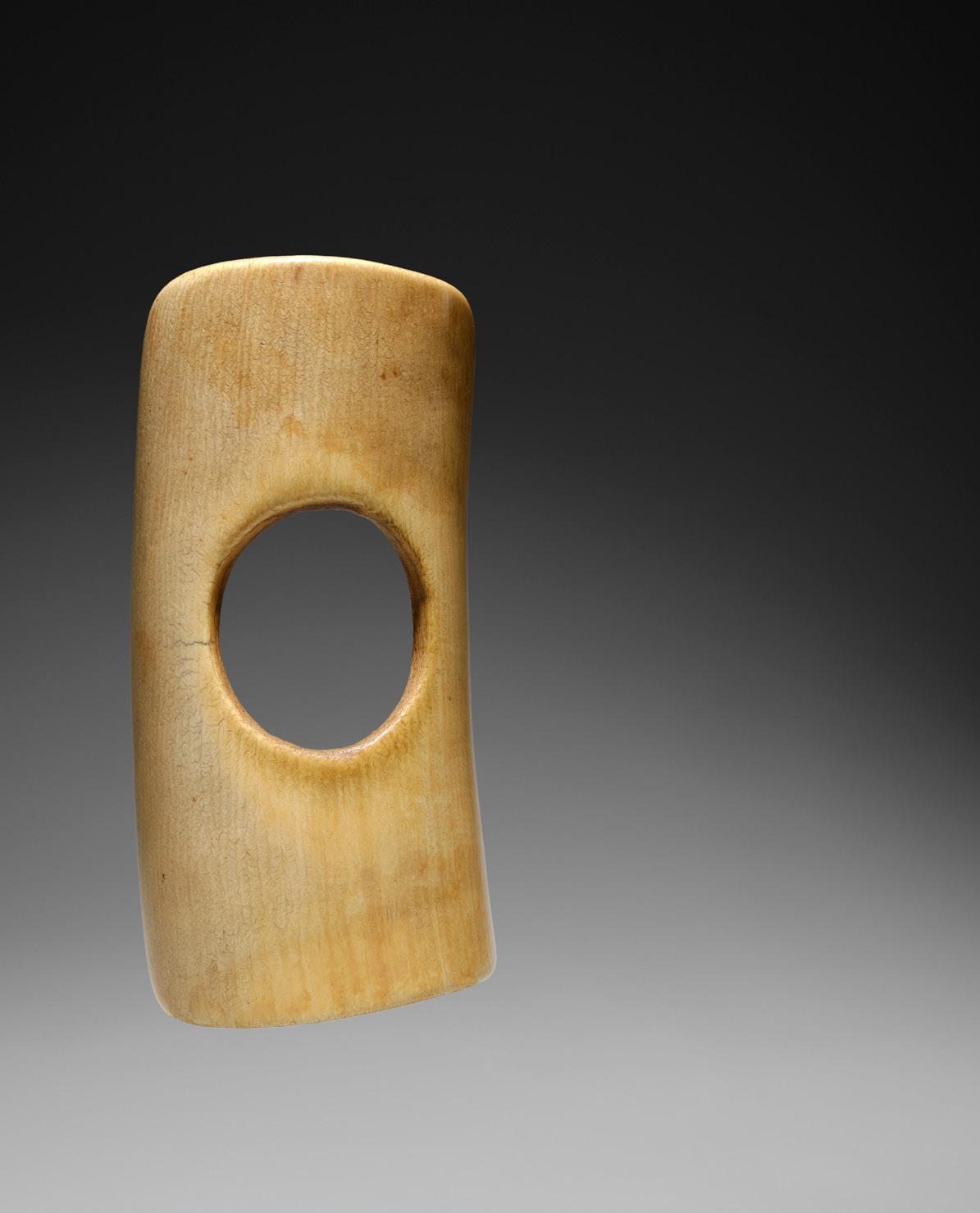
Provenance: Michel De Mol Pierre Dartevelle, Brussels Private collection, Belgium
Published:
Claude-Henri Pirat, Du Fleuve Niger au Fleuve Congo. Une aventure africaine, Primedia, Arquennes, 2014, pp.140, 253, cat.18 (ill.)
€ 2000 - 3000
With Cites BE2023.
Signal - 2004
Bronze
68 x 19,5 x 6,5 cm
Provenance: Private collection, Brussels
€ 6000 - 8000
 085 Jacques Moeschal (Belgian, 1913 - 2004)
085 Jacques Moeschal (Belgian, 1913 - 2004)
086
Nigeria
Wood and beads, 25,5 and 26 cm
Provenance: Private collection, Belgium Galerie Didier Claes, Brussels
Published:
Galerie Didier Claes, Ibeji, 2021, p.17
€ 3000 - 4000
Gift from Didier Claes to the charity "En avant les enfants" which created a cultural foyer in Goma.

Eager to broaden its range of skills, the Foyer aspired to include other art forms, including the seventh: cinema. This is how a film workshop was opened six months ago. Many young people, eager to discover this means of expression, quickly got involved. A section for maibobo (street children) was also created.
This overflowing enthusiasm and the strong demand for participation lead us today to look for funding to perpetuate this new workshop. The funds collected will be used to consolidate the installation of a small autonomous audio-visual cell, of which the students will be the main creators and actors in order to familiarize them with the camera, acting, and film writing as a whole.
Group IV, Five-Color drawing - 1991
Watercolor
Provenance:
Galerie Meert-Rihoux, Brussels
Private collection, Brussels
Exhibited:
Galerie Meert-Rihoux, Brussels, Richard Tuttle, 5-color drawing, November 12 - December 7, 1991
€ 3000 - 4000
 087 Richard Tuttle (American, 1941)
and pencil on paper, 29,5 x 37 cm
087 Richard Tuttle (American, 1941)
and pencil on paper, 29,5 x 37 cm
(Argentinian - French, 1932 - 1995)
Relief à réflexions perpétuelles - 1966 Mirror, plexiglas, electric motor, 30 x 30 x 11 cm

Edited by Galerie Denise René, Paris (with label on verso)
Provenance:
Galerie Denise René, Paris Private collection, Brussels
Exhibited:
1969, Paris, Galerie Denise René, Demarco: Dynamique de l’image, Multiples, cat.5 (ill.)
€ 2000 - 4000
Announced to be in an edition of 50 pieces, it is known that for this type of multiple sculptures only a few were made at a time to save cost and space. It is however impossible to determine how many of these reliefs were actually made.
088 Hugo DemarcoNigeria
Wood and pigment, 106 cm
Provenance: Private collection, Brussels
€ 4000 - 6000
Mumuye shoulder mask, called Sukuru, that can be attributed to Lenke from the Zing village south of the Benue River. This attribution is based on a very similar mask belonging to the collections of the Musée des Confluences in Lyon
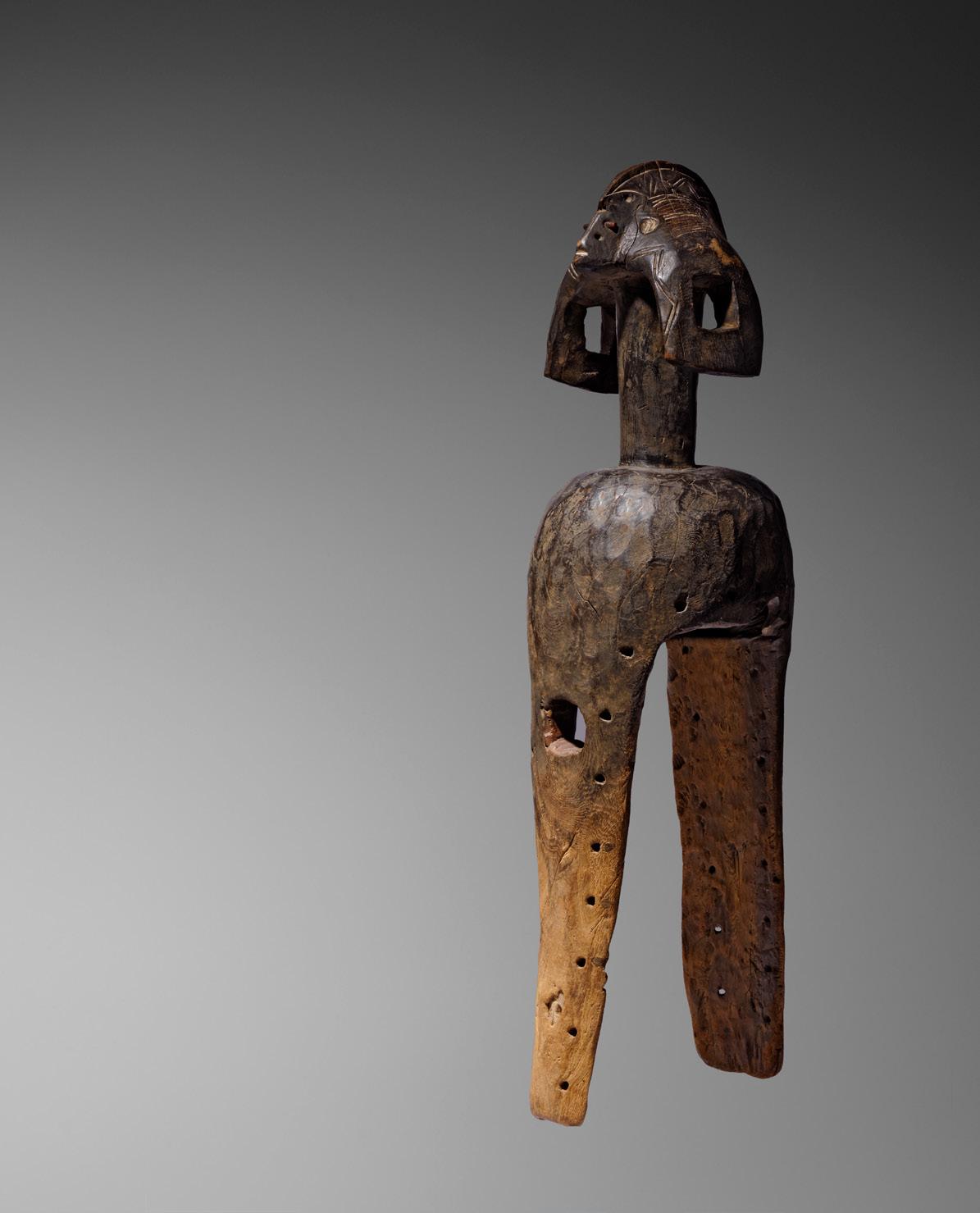
090 . Herbert Zangs (German, 1924 - 2003)
Foldings - 1954
Folded Kraft paper and gouache, 52 x 71 cm
Signed and dated lower right
Provenance:
Galerie Françoise Palluel, Paris (FIAC 1994)
Private collection, Brussels
Published:
Emmy de Martelaere, Herbert Zangs, Catalogue raisonné of the Abstract Works, Tome I 1952-1960, Fascicule n°2 1953-1954, Editions Emmy de Martelaere, Paris, 2004, p.183, cat.I.2.251
Exhibited:
Galerie Stevenson & Palluel, Paris, Herbert Zangs, Œuvres blanches des années 50, 1975

Galerie Françoise Palluel, FIAC, Paris, 1994
Goethe Institut, Izmir, Herbert Zangs "Le blanchiment", 16 January - 24 February 2006
With label on verso of the Archives Emmy de Martelaere, and reference number 1249
€ 4000 - 6000
Born in 1924 in Krefeld, Herbert Zangs has always operated on the fringes of the art world, preferring to work privately, in total freedom. He never joined or participated in artistic movements or groups that were created around him, such as the ZERO group, which he refused to join. He proclaimed a freedom that he would defend all his life, at the risk of losing his place and his notoriety on the artistic scene.
It was but with the retrospective exhibition held at the Fondation Cartier in Paris in 1995 that Herbert Zangs got the recognition he deserves for his pioneering work.
Provenance:
Antoine Ferarrari de la Salle, Abidjan, Paris
Published:
Claude-Henri Pirat, Du Fleuve Niger au Fleuve Congo. Une aventure africaine, Primedia, Arquennes, 2014, pp.141, 253, cat.20 (ill.)
€ 4000 - 6000
Beautifully aged kome pendant of exceptional size and refined proportions, with a gorgeous patina of age and use.
Wearing this type of pendant was the prerogative of elephant hunters amongst the Lobi. It was both a sign of prestige of their status, as an amulet to protect them against the negative Kele – a powerful and dangerous force capable of affecting the hunter to the point of causing madness or death.
With Cites BE2023.
 091 Lobi Pendant Burkina Faso Ivory, 23 cm
091 Lobi Pendant Burkina Faso Ivory, 23 cm
092 Idoma Mask

Nigeria
Wood, 19 cm
Provenance:
Mina And Samir Borro, Brussels / Abidjan
Alain De Monbrison, Paris
Liliane And Michel Durand-Dessert, Paris
De Baecque & Associés, Paris, 14 November 2018, L'Art du Temps.
Collection Liliane & Michel Durand-Dessert
Private collection, Spain
€ 4000 - 6000
093 Walter Leblanc (Belgian, 1932 - 1986)
Gouache - Relief sable - 1960/1962
Sand on paper and silver paint 40 x 49,5 cm
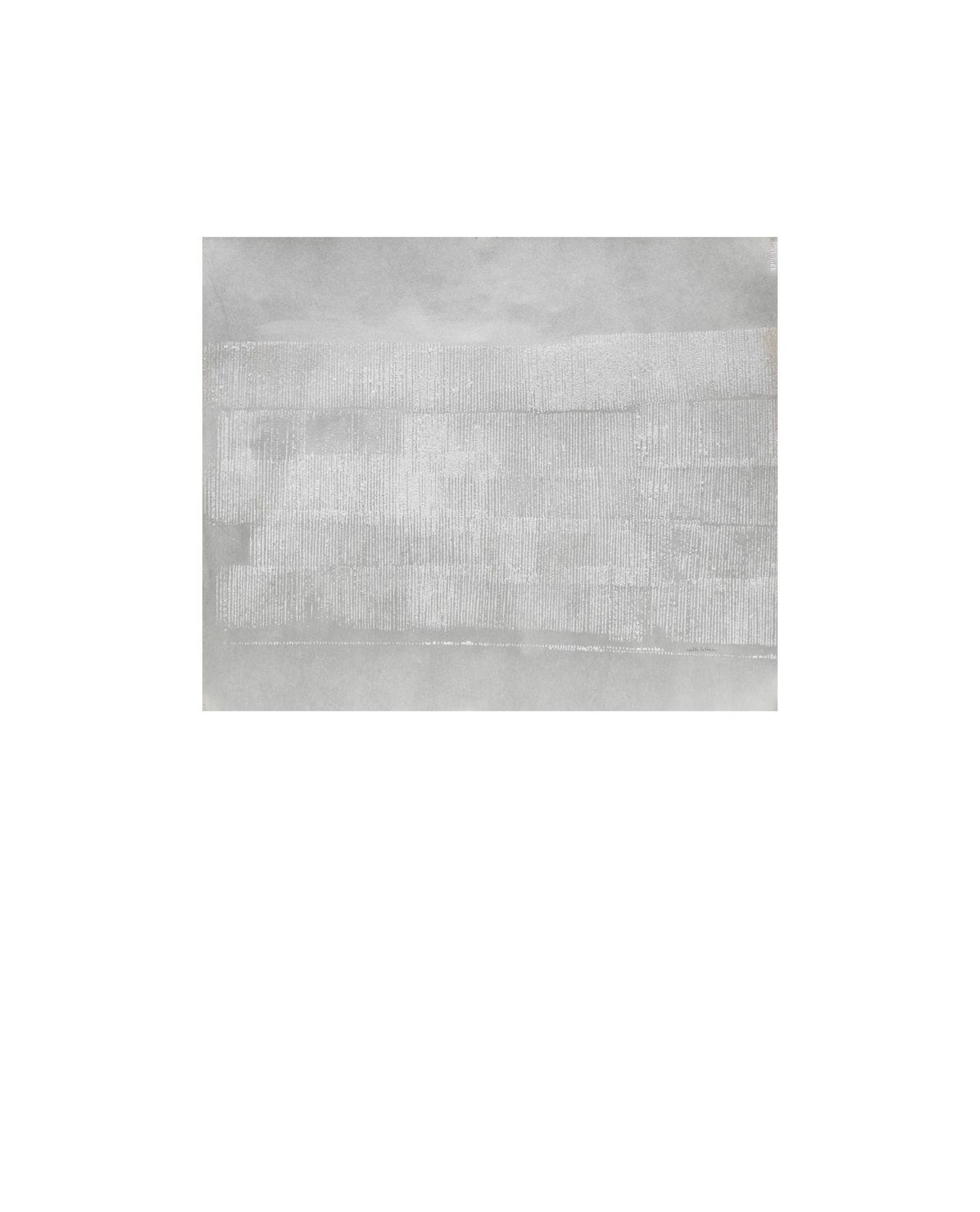
Signed lower right
Provenance:
Private collection, Brussels
Published:
N. Leblanc, D. Everaerts de Velp-Seynaeve, Walter Leblanc.
Catalogue raisonné, 1997, Bruges, cat.222 (ill.)
€ 6000 - 8000
094 Circle of Sir Thomas Lawrence (British, 1769-1830)
Portrait of a Young Boy - c.1834 Oil on canvas, 61 x 47 cm Stamp "T. Brown, London" on verso
Provenance:
M. and Mrs. Harris Masterson, Houston Houston Museum of Fine Arts, Houston Sale Parke-Bernet, New York, 1973
Belgian private collection
Thence by descent
€ 6000 - 8000
Despite the unquestionable painterly quality of this beautiful boy’s portrait, the Houston Museum of Fine Arts deaccessioned this painting in 1973. It was put up for sale at Parke-Benett in New York where it was acquired by a Belgian diplomat working there at the time.
On the verso of the painting we find the stencil stamp “T.Brown, London” and its matching date stamp “10-34”. They allow us to date the canvas October 1834, so the actual painting must have seen the light the following year, or shortly thereafter. Without further information on the identity of the sitter, it becomes particularly challenging to positively identify the painter.
Thomas Brown was a well-known artist’s suppliers shop in London, established in 1805 that remained in business till 1854. Thomas Lawrence was amongst his clients, but Brown’s stencil can be found on numerous canvases of the period, including those painted by Henry Fuseli, John Constable, J.M.W. Turner, David Wilkie, and John Everett Millet.
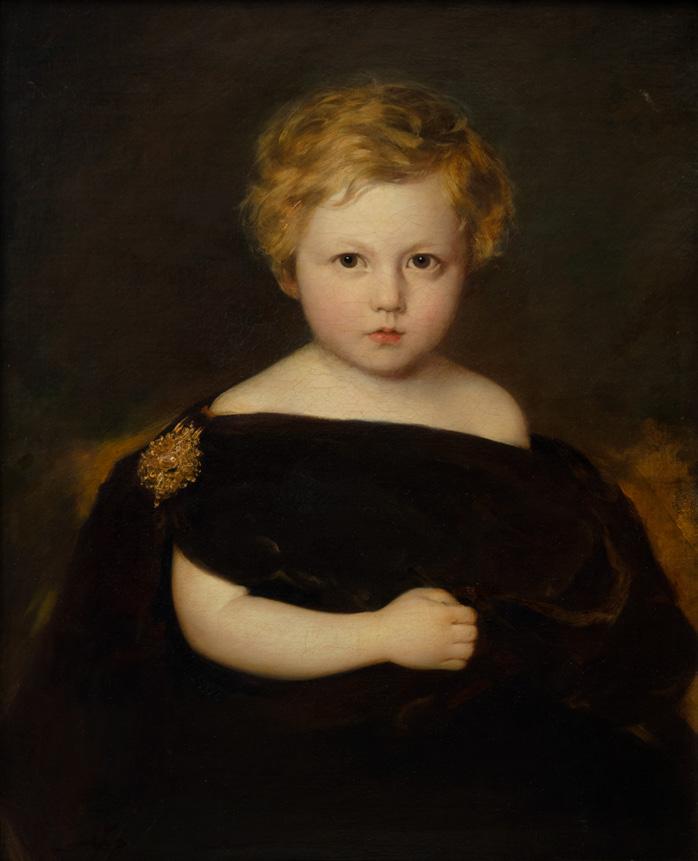
Still Life - 1976

Oil on canvas, 92 x 73 cm Signed and dated on verso
Provenance: Private collection, Brussels
€ 5000 - 6000
Guy Degobert’s preferred subject matters – objects that could come straight out of a magazine ad - betray his professional background in advertising. Presenting everyday objects with distinct labels in a painstakingly precise manner on a white background, these works are akin to the contemporary art movements of his time as Pop Art and Hyperrealism. Never having formally adhered to any of these currents, his typical still lifes also draw from the more classical traditions such as trompe l’œils, Dutch 17th C. still lifes, and vanitas paintings. Added to all this, the juxtaposition of seemingly unrelated objects conveys a sense of confusion, and it has been pointed out that there is an almost surreal feel to this incongruous mix of unrelated objects. His compositions can also be seen as modern still lifes in the most strictly painterly tradition: a play of volumes and colors, allowing the artist to showcase his virtuosity in the rendering of light, reflections, textures, and patterns.
095 Guy Degobert (Belgian, 1914-1988)Provenance: Private collection, Spain
€ 4000 - 6000
Ekpu sculptures were traditionally carved after the demise of a chief. Distinguishable features are the long chief’s beard, the rounded belly, and the loincloth. Usually, these figures carry a fan, a stick, or a drinking horn in their hand, as is the case in this one. Although strongly eroded, we can still recognize the outlines of what was most likely a fan.
The Ekpu statues of chiefs were kept in the men's meeting room, the obio, and it is believed that the authority of the deceased chief lived on in these figures, as such consolidating and reinforcing the authority of the present and future generations.
Typically, Ekpu were made of hardwood and the advanced state of erosion of this figure testifies to its age. The tradition of carving Ekpu after the passing of a chief disappeared in the early 20th C.
 096 Oron Ancestor Figure - Ekpu Nigeria, Cross River region Wood, 82 cm
096 Oron Ancestor Figure - Ekpu Nigeria, Cross River region Wood, 82 cm
097 Important Jukun Throne
Nigeria Wood and pigments, 162 cm
Provenance: Private collection, Belgium
€ 8000 - 12 000
Imposing anthropomorphic royal throne from the Jukun peoples that can be traced back to its village of origin, Wukari in the Taraba region.

Untitled - 1966
Mirror, paint, and panel
69,8 x 69,8 cm
Signed, dated, and with the artist's fingerprint on verso
Provenance:
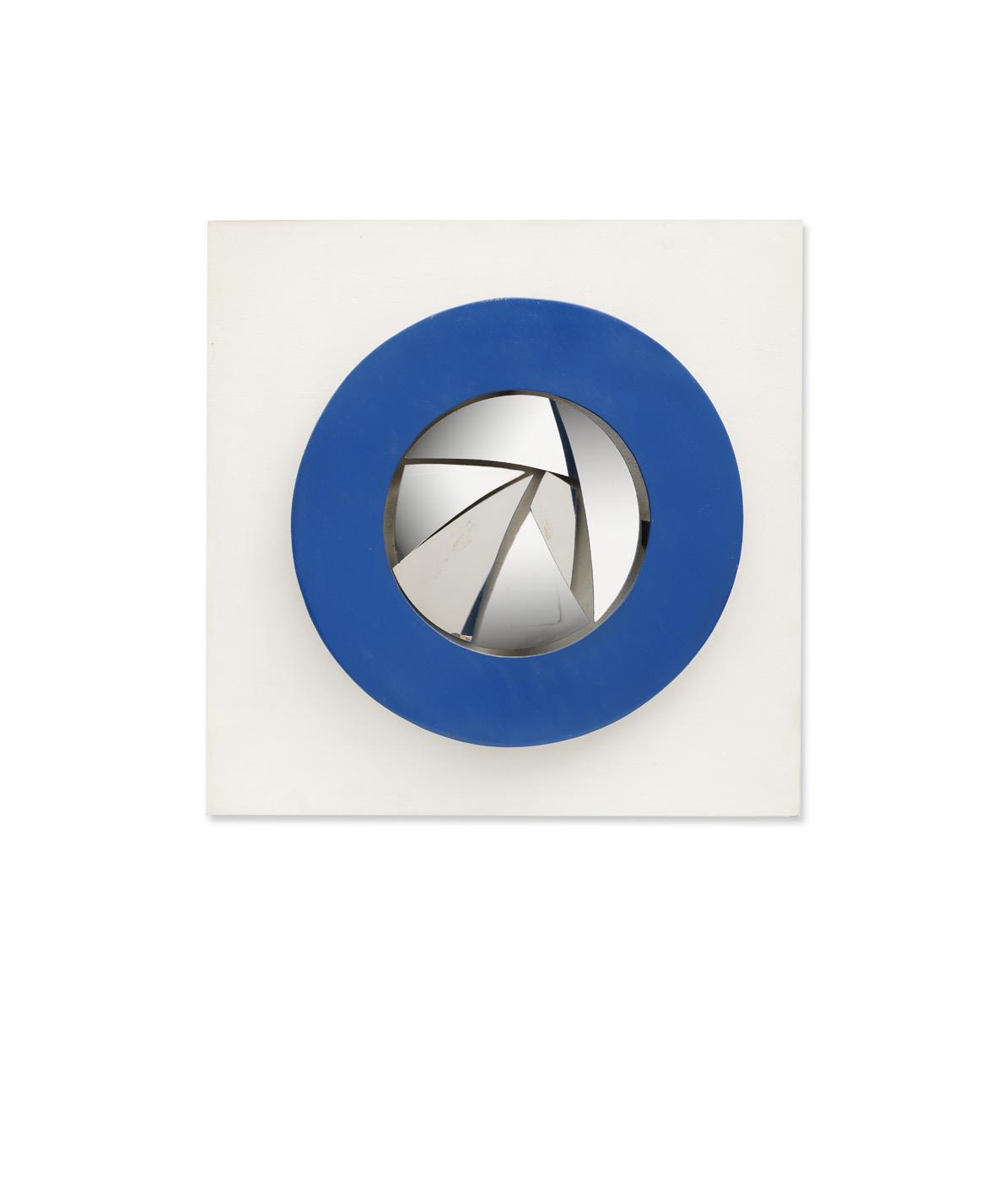
Private collection, Brussels
€ 4000 - 6000
098 . Christian Megert (Swiss, 1936)099 Antonio Asis
(Argentinian, 1932 - 2019)
Vibration Couleur 36 - 1967
Acrylic on wooden panel, metal grid, 37 x 80 cm Titled, signed, and dated on verso With signature stamp of the atelier on verso

Provenance: Private collection, Brussels
€ 8000 - 10 000
After his studies at the Instituto Universitario Nacional de las Artes in his hometown Buenos Aires, Antonio Asis left for Paris in 1956 where he found the company of likeminded artists with whom he shared the need to go beyond the traditional language of geometric abstraction and break the straitjacket of the fixed and immutable form. On year earlier, the exhibition “Le Mouvement” at the gallery of Denise René had marked the birth of Op art and Kinetic art, and Asis arrived exactly at that moment in Paris that saw the emergence and following heydays of these new art currents.
On the edge between Op Art and Kinetic Art, Antonio Asis started to create relief structures like the one presented here, where a perforated metal grid superposes a back panel painted with regular geometric forms. The partially obscured view through the grid creates blurry clouds of light and color, that shift in shape as the viewer moves in front of them. Together with other artists - mainly gravitating around the gallery of Denise René - such as Yaacov Agam, Pol Bury, Hugo Demarco, Julio LeParc, Nicolas Schöffer, Jesús Rafael Soto, Jean Tinguely, Victor Vasarely a.o. – Asis shaped the history of optical-kinetic art. With an exceptional coherence in his oeuvre, the evolution of the works by Antonio Asis can actually be seen as the history of this movement in a nutshell.
His works can be found in major collections and museums such as the Cisneros Collection, the Centre Georges Pompidou in Paris, the Museo de Arte Moderno Jesús Soto in Ciudad Bolívar, the Museo Nacional Centro de Arte Reina Sofia in Madrid, and The Museum of Fine Arts in Houston, to name but a few.
100 Kaka Figure
Nigeria
Wood, 65 cm
Provenance:
Louis Pieter Cornelis van Rijn (Lode 1910-1997)
Galerie Khepri, Amsterdam, The Netherlands, 1977
Ron Boelen, Amsterdam/Soest, The Netherlands.
Wil Hoogstraate (1917-2008)/Galerie d'Eendt, Amsterdam, The Netherlands
Harrie Oosthoek, The Hague, The Netherlands
Private collection
€ 10 000 - 15 000
Powerful and very rare Kaka ancestor figure of a man carrying a child on his back. Whereas maternity figures are ubiquitous in African sculpture, paternity figures are only known to be found among the Kaka.

Literature on the meaning of this peculiar subject is divergent, but it has been suggested that these ancestor figures symbolize the role of elders transmitting their knowledge during initiation rites to the younger members of the community. As such, the image can be read as an ancestor giving “social birth” to the young initiate.
A thick crust of soot covers the whole sculpture, albeit not obscuring the decorative patterns on the chest of the figure, or the vertical ridge on the forehead and double lines that suggest the hairdo.
Burkina Faso
Wood and pigments, 185 cm
Provenance: Private collection, Spain
So-called “Doyo” plank mask, used during initiation ceremonies for young men and women, but also at funeral and memorial services, and during harvest ceremonies.
With its impressive size of almost two meters, this Doyo is loaded with symbolic references to Bwa culture. At the top of the mask, we find a crescent shape, symbolizing the moon that punctuates the seasons and determines the ceremonial year during which these masks are danced.
At the bottom is represented an owl face with a long beak, symbolizing the male sex and fertility. The central part of the mask is entirely covered with a checkerboard pattern. It is based on the practice of young initiates receiving a new white goatskin to be seated upon during ceremonies once they have finished their initiation rituals. Over the years, when they in turn become elders, this same goatskin becomes darker in color due to repeated use. This represents the close relationship between the elders of the community and the young initiates.
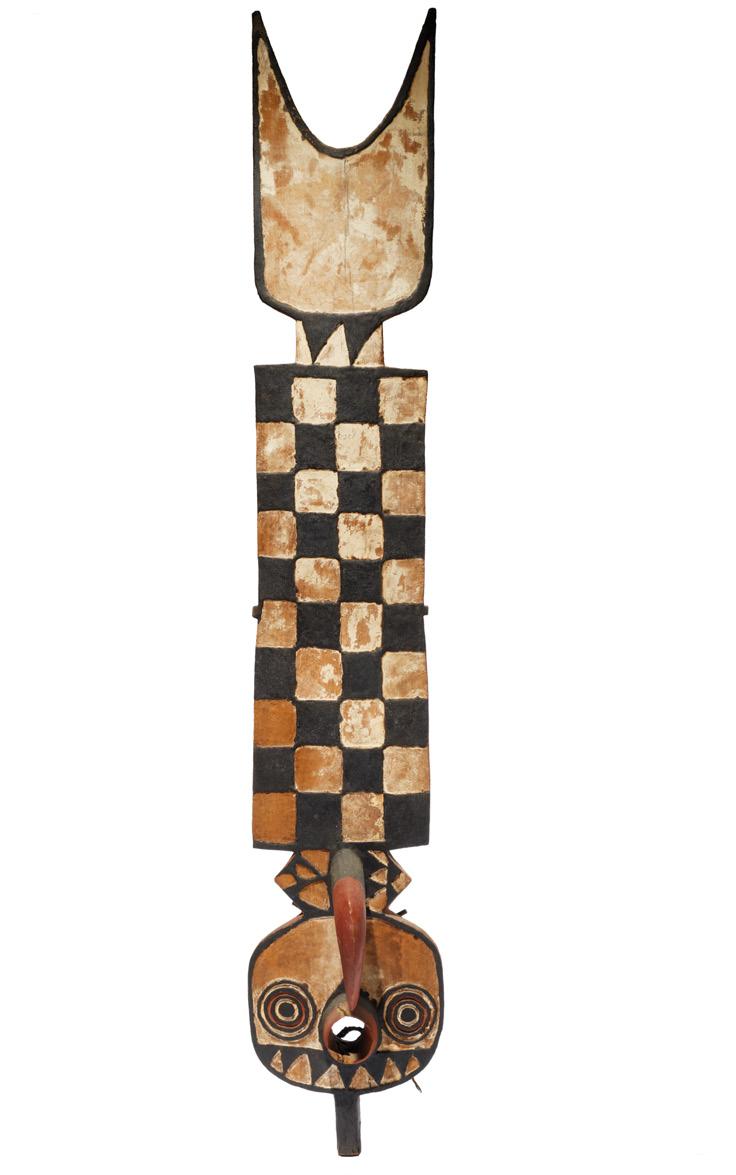
102
Drogenbos - 1970s
Oil on canvas, 65,5 x 92 cm
Signed on verso
Provenance: Private collection, Brussels
€ 6000 - 8000
In this brutally realistic rendering of an urban landscape in the Brussels region at the end of the 70s or beginning of the 80s, with at its center a popular supermarket, Degobert comes closer than ever to Hyperrealist painting. Contrary to his American counterparts in this movement, there is no room for embellishment or idealization through attractive light reflections and sleek lines of modern buildings. The attention is drawn to the electricity poles that resemble the single bare tree in the center of the composition, the abundance of cars suggests a traffic jam, and in the background, we can see the buildings of factories and the big water towers of the electric plant that dominate the landscape.
Just as Degobert likes to play with classic traditions in his still lifes, the landscape is treated here in a very similar way to classical landscape painting. Instead of sloping green hillsides, trees, and the occasional traveler on horseback, he shows us a very contemporary variation on the same theme. To the onlooker today, it all looks quite grim, but there is also a tinge of melancholy and even nostalgia present. In a subliminal manner, Degobert brings to the surface a sadness for a paradise (that probably never existed as such in the first place) lost.
 . Guy Degobert (Belgian, 1914-1988)
. Guy Degobert (Belgian, 1914-1988)
Study for The Last Dance - 1994
Watercolor and charcoal on paper, 74,3 x 101 cm Titled, signed, and dated alongside the right edge

Provenance: Private collection, Brussels
€ 3000 - 5000
Study for a multi-media installation Dennis Oppenheim created for a gallery space at the Children's Museum of San Diego in 1994.
The piece consisted of four pairs of cacti forms spinning together in a disjointed dance to a cacophony of music emitted from a number of 1940s radios, a record player, and a bass drum randomly beaten by a mechanized pedal. The seeming chaos of the disharmonious music and the spinning cacti figures - that both strive for closeness, yet at the same time present harm to each other - suggests a relationship, especially between two cultures, where elements come together, sometimes clash and always intertwine.
103 Dennis Oppenheim (American, 1938 - 2011)104 Tsogho Post Gabon Wood, 127 cm

Provenance: Franco Monti collection, Milan - Lugano (acquired in situ 1960s)
Anna and Antonio Casanovas, Galleria Arte y Ritual, Madrid
Galerie Joaquin Pecci, Brussels Private collection, Spain
€ 6000 - 8000
105 Pol Bury (Belgian, 1922 - 2005)
1548 Points Blancs - 1987
Wood, nylon wires, electric motor, 60 x 60 x 22 cm
Signed and titled on verso
Provenance:
Private collection, Brussels
Published:
Rosemarie E. Pahlke. Pol Bury, avec catalogue raisonné. Ghent, Crédit communal, 1994, p.235, cat.87-2
G. Marquenie, Pol Bury Online Catalogue Raisonné, R399
Exhibited:
Paris, Maison de Balzac, Pol Bury. Images pour la théorie de la démarche, 20 May - 12 June, 1992
€ 30 000 - 40 000
We all know that there are two forms of modern sculpture, one moves, and the other does not. Pol Bury, touched by genius, discovered a sculpture that moves so little that at first sight, you will rank it with those that do not move. This does not sound exciting when you read about it, but to see it is as terrifying as a tale by Edgar Allan Poe.
J.-F. Revel on the 32nd Biennale in Venice, L’Œil, July / August 1964

14 cm
Provenance: Private collection, Belgium
€ 6000 - 8000
 106 Kongo Figure D.R. Congo Wood and brass tacks
106 Kongo Figure D.R. Congo Wood and brass tacks

South Sudan
Wood and brass, 72 cm
Provenance: Pierre Dartevelle, Brussels Private collection, Brussels
Published: Claude-Henri Pirat, Du Fleuve Niger au Fleuve Congo. Une aventure africaine, Primedia, Arquennes, 2014, p.192, cat.72 (ill.)
€ 3000 - 5000
108 Lega Mask

D.R. Congo Ivory, 12 cm
Provenance: Dr. Edward S. Ross (acquired in 1957 during a mission in the Lega region)
Sale Bonhams-Butterfield, San Francisco, Native American & Tribal Art, 5 December 2005, lot 1395 Pierre Dartevelle, Brussels Private collection, Brussels
Published:
Anne-Marie Bouttiaux, Persona, masques d'Afrique: identités cachées et révelées, Royal Museum for Central Africa, Tervuren, 5 Continents Editions, 2009, p.170, fig.6, p.174 (ill.)

Claude-Henri Pirat, Du Fleuve Niger au Fleuve Congo. Une aventure africaine, Primedia, Arquennes, 2014, pp.240, 258-259, cat.122 (ill.)

Bernard de Grunne, Lega. Les masques en ivoire des Lega, Brussels, 2021, cat.20, pp.72-73 (ill.)
Exhibited:
Tervuren, Royal Museum for Central Africa, Persona, masques d'Afrique: identités cachées et révelées, 24 April 2009 - 3 January 2010
Brussels, Bruneaf, Galerie Harmakhis, Lega. Les masques en ivoire des Lega, Bernard de Grunne, 2021, cat.20, pp.72-73 (ill.)
€ 60 000 - 80 000
With Cites BE2023.

Amongst Lega ivory masks two types can be distinguished: the larger idimu, about 19 to 22 cm, and the smaller lukungu, as the one presented here, that fit into the palm of a hand. The lukungu play an essential role in the Bawami brotherhood and wearing them is the sole prerogative of members of the lutumbo la kindi rank, the highest rank. Lukungu means “skull” and these masks are idealized representations of ancestors. Upon the passing of its bearer, the mask is displayed on the tomb before being transmitted by descent as a symbol of continuity.
Physical beauty and moral excellence are inextricably linked in Lega culture. The heart-shaped pattern of small dots on this outstandingly refined mask thus alludes to an aesthetically valued scarification pattern as to the moral excellence of its bearer.

The prestige and exclusivity of such masks also explain the fact they are exceedingly rare and the beautiful patina that we find on the mask presented here, can only be obtained through extensive use and wear over several generations.
This mask was acquired in 1957, during a mission in Lega land by Dr. Edward S. Ross, at that moment the head of the entomology department of the California Academy of Sciences in San Francisco.

109
Running Electric Drill - 1970
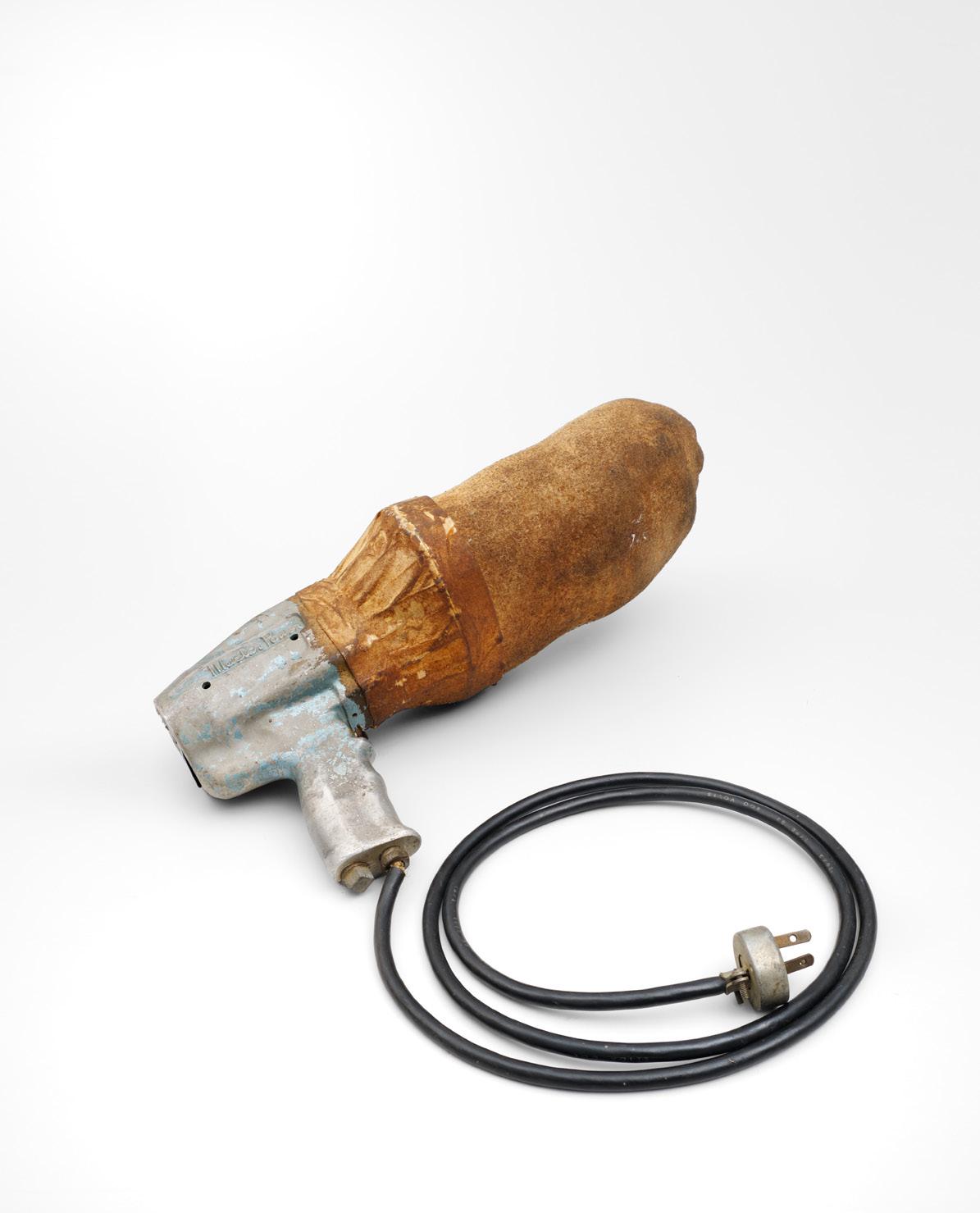
Mixed media, assemblage, 43 cm
Provenance: Galerie MTL, Antwerp Galerie J.P. Alaerts, Brussels (sold in 2003) Private collection, Brussels
€ 4000 - 6000
With a photo certificate by the artist dated 1976.
Edward Kienholz (American, 1917 - 1994)
Angola Wood, 43 cm
Provenance: Francisco Ferreira Gouveia, Estoril Rui Castro collection, Lisbon
€ 12 000 - 15 000
Among the Songo, we find many artifacts, ranging from chairs to stools, ceremonial weapons, and staffs, to tobacco pipes that are ornated with figures and scenes of village life.
Elaborately decorated pieces, such as this staff, reflected the high status and power of its owner.
After Rubens - Têtes d'un Maure - 1987-1988

Oil on canvas, 52,5 x 44 cm
Signed and dated on verso
Provenance: Private collection, Brussels
€ 3000 - 4000
As a pur sang painter, Sam Dillemans has always measured himself against the greats of art history, ranging from Rubens to Rembrandt to Picasso. This entails a relentless struggle with the canvas and the paint, a romantic and quasidoomed ambition, where there is no room for complacency or less than utter commitment.
It should come as no surprise that a painting genius like Rubens made a great impression on the young artist, as becomes abundantly clear in this study after the right-hand section of "Têtes d'un Maure". In his oil sketches, we discover Rubens working with a much freer technique than his finished pieces, which still appeals to the modern viewer. It is precisely this timeless quality that compels Dillemans to a profound admiration for the Baroque master. Already in this early work by Dillemans, the artist's exuberant temperament splashes from the canvas, a trait that is increasingly expressed in his later works, with Rubens always present among the many greats to guide and inspire him.
Provenance: Paul Monin, Financial administrative agent in Congo from 1914 to 1927
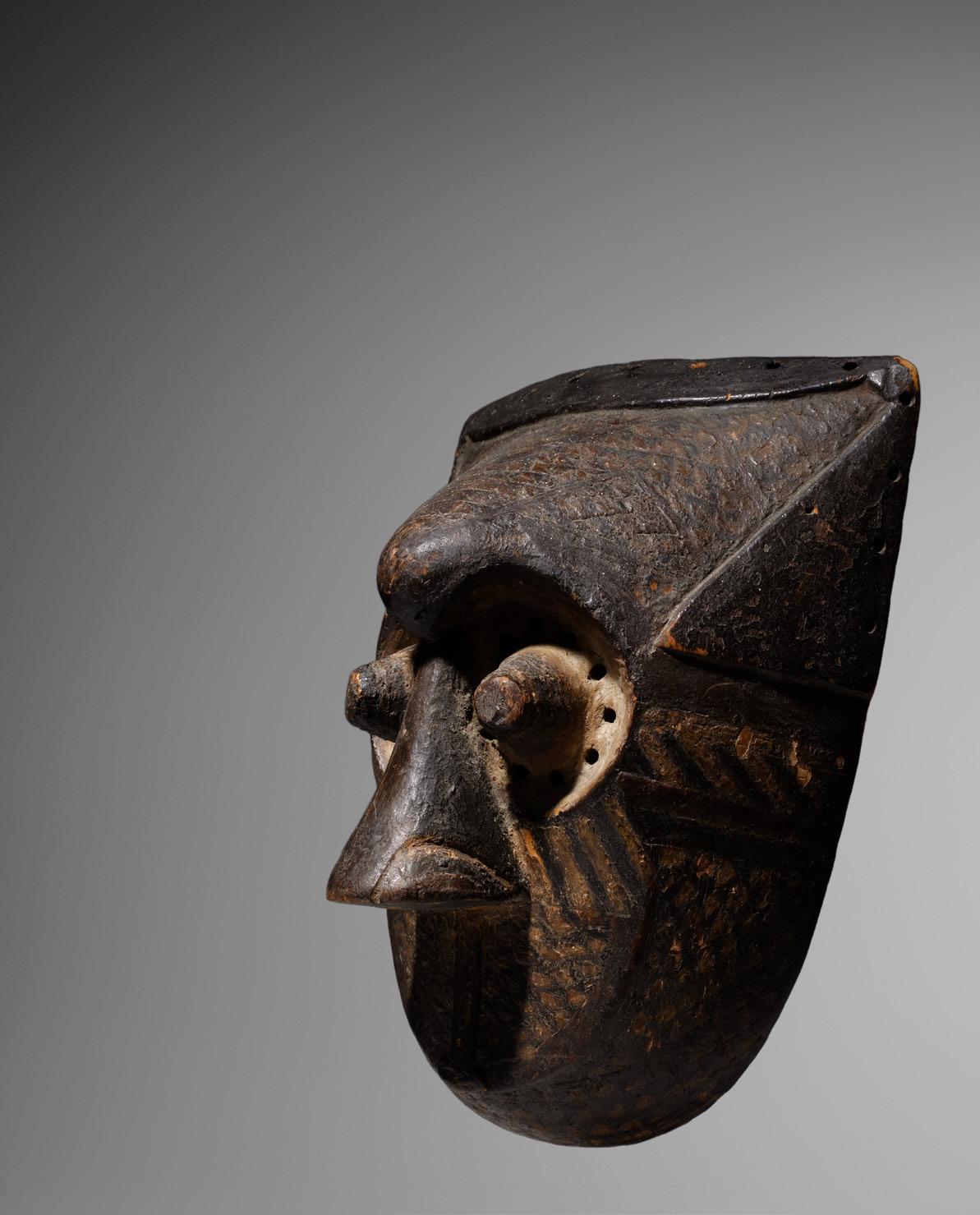 By descent
By descent
Private collection, France
€ 4000 - 6000
112 . Kuba Mask D.R. Congo Wood, 27,5 cm113 . Hugo Demarco (Argentinian - French, 1932 - 1995)
Relation - 1968

Metal, wood, and electric motor, 252 cm Signed, located, dated, and titled inside the base: Paris 1968
Provenance:
Galerie Denise René, Paris Robert Rousseau collection
A.C.E.C. Collection, Marcinelle (1970 - 1988)
Galerie Dewindt, Brussels Private collection, Brussels (1990)
Published:
Robert Rousseau, Œuvres d'art contemporain acquises par ACEC et exposées dans les nouveaux bureaux de direction générale, s.l., s.d., cat.28 (ill.)
For the new central offices of the executive directors of A.C.E.C. (Ateliers de Constructions Electriques de Charleroi) in Marcinelle an art collection was started in the early 1970s that had to reflect the company’s business and the image it wanted to project. It was almost obvious that kinetic art was often chosen to embellish these work surroundings and especially the public spaces where visitors were received.
Robert Rousseau, the former director of the Museum of Fine Arts in Charleroi was pivotal in the selection of works that entered the collection. This monumental sculpture by Hugo Demarco was acquired by Rousseau from Galerie Denise René in 1968 and entered the collection of A.C.E.C. in 1970. In pictures from the period we can see it standing in the ground-floor reception hall. On the base, we still find the inventory number “28” of this collection that was sadly dispersed in 1989 after the company had been dissolved.
D.R. Congo Wood and pigment, 31 x 38 cm
Provenance:
Florence Hupin and Georges van Parijs collection, Luena By descent (brought to Belgium c.1910-1920)
Private collection, Belgium
€ 10 000 - 15 000
Both amongst the Songye and Luba we find striated face masks known as Kifwebe. Luba and Songye cultures developed separately, resulting in different forms and use. The Luba Kifwebe are typically round in shape, and function during performances to purify the community of the evil spirits of sorcerers.
The smooth patina of this mask testifies to its extensive use.
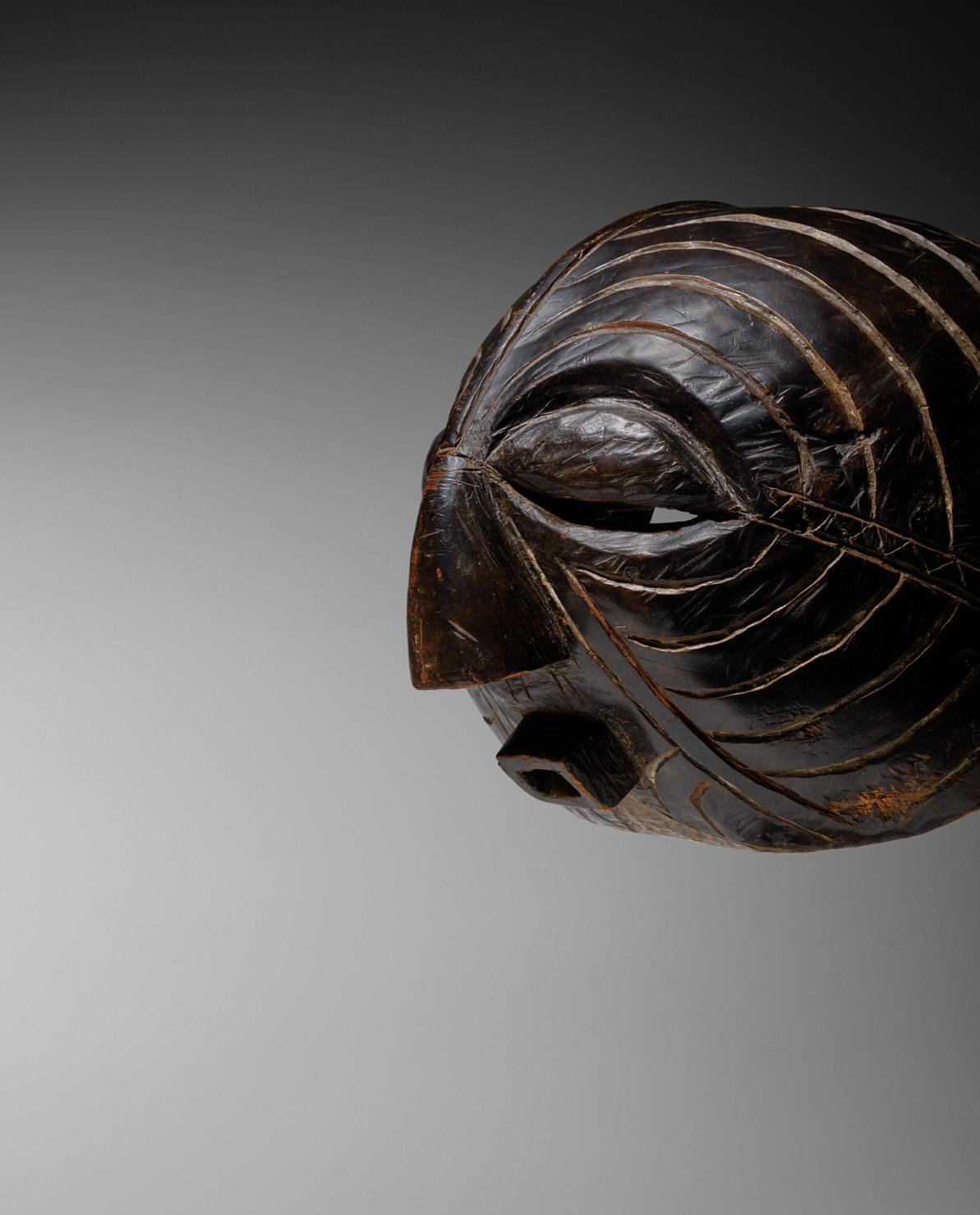 114 . Luba Kifwebe Mask
114 . Luba Kifwebe Mask
115 Songye Shield
D.R. Congo Wood, 32,5 cm
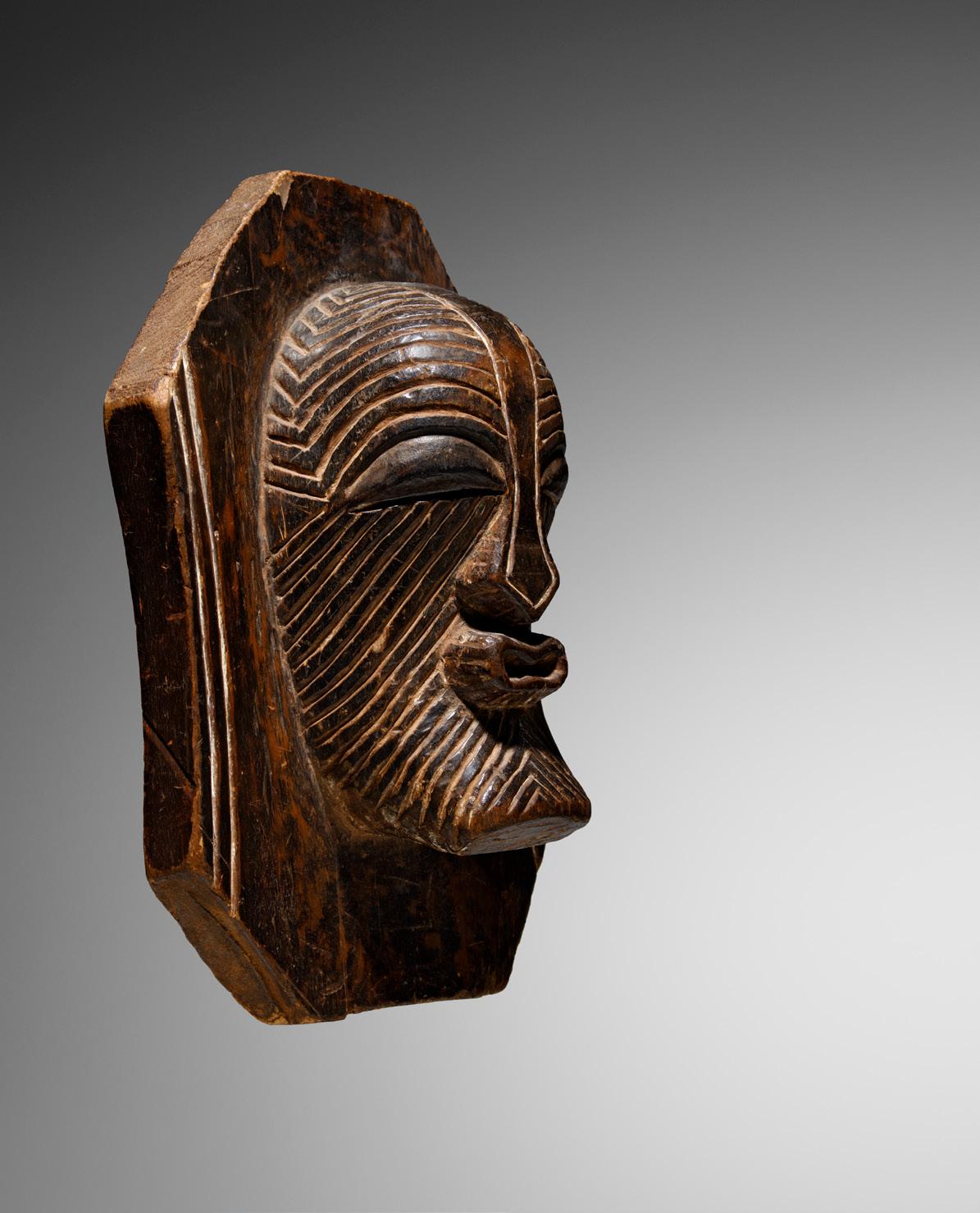
Provenance:
Ladislas Segy collection, New York Didier Claes, Brussels Private collection, Spain
€ 6000 - 8000
Untitled - c.1985-86

Biro on paper, 21 x 29,5 cm
Provenance: Private collection, Brussels
€ 3000 - 5000
116 Stéphane Mandelbaum (Belgian, 1961 - 1986)
Tanzania
Wood, snakeskin, leather, and vegetal cord, 78 cm Provenance: Pierre Dartevelle, Brussels Private collection, Brussels
Published:
Claude-Henri Pirat, Du Fleuve Niger au Fleuve Congo. Une aventure africaine, Primedia, Arquennes, 2014, pp.210, 257, cat.95 (ill.)
€ 3000 - 5000
119 . Maori House Post New Zealand, 16th - 17th C. Wood, 61 cm
Provenance: Galerie Christine Valluet et Yann
Ferrandin, Paris Private collection, Brussels
Exhibited:
Parcours des Mondes 2008, Paris
€ 30 000 - 50 000
Imposing ancestor figure from the so-called Maori classic period that approximately ended with the first arrival of Captain James Cook in 1769 in New Zealand and the thereupon following influence of European culture. The bulky rendering of the body and shallow carving of the moko (facial tattoo) testifies to this period when metal tools were not available.

Carved house posts like this Pou tokomanawa took the central place in the Meetinghouse. The represented ancestor symbolizes the continuity over the generations of the community.
A C14 analysis effectuated by CIRAM dates the wood by 95% probability to the 16th or 17th century, which is coherent with the style of this sculpture.

120 Dayak Shield
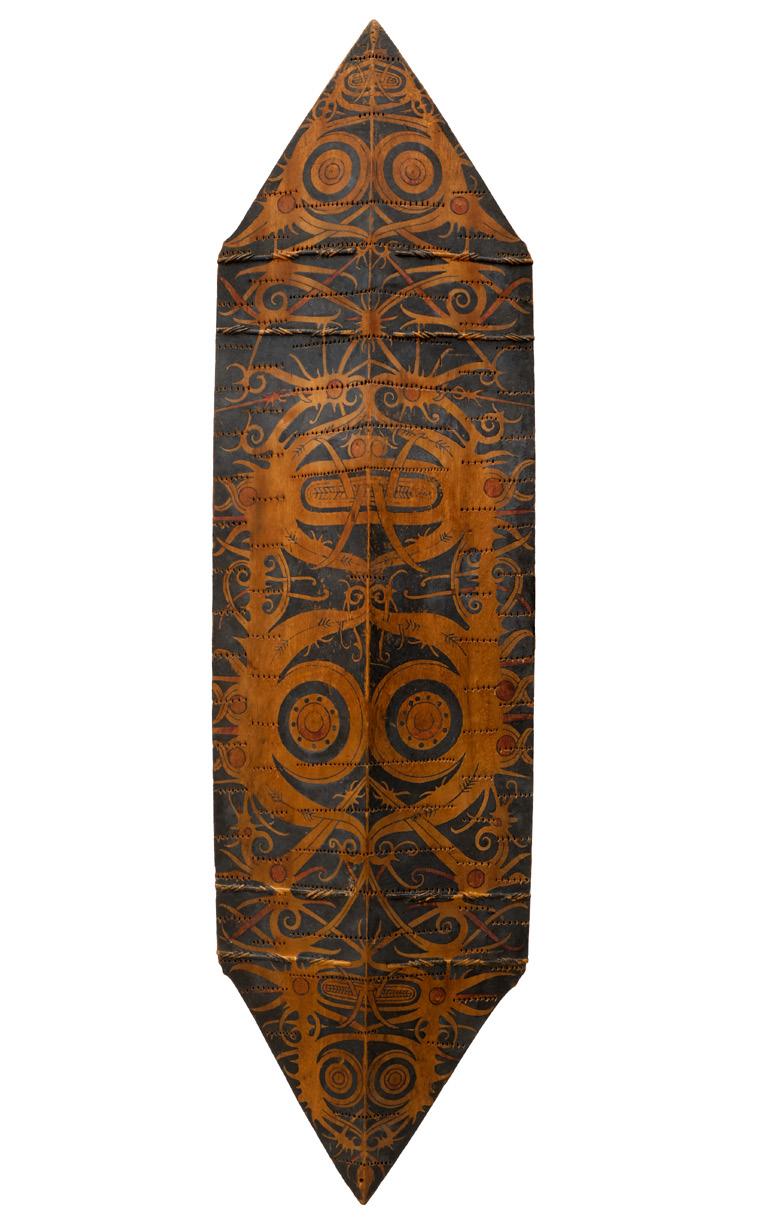
Borneo Wood, rattan, and pigments
152 cm
€ 5000 - 7000
Vanuatu, Papua New Guinea Wood, 114 cm
Provenance: European private collection
€ 1500 - 2000
 121 . Tana Club
121 . Tana Club
New Guinea Wood, 64 cm
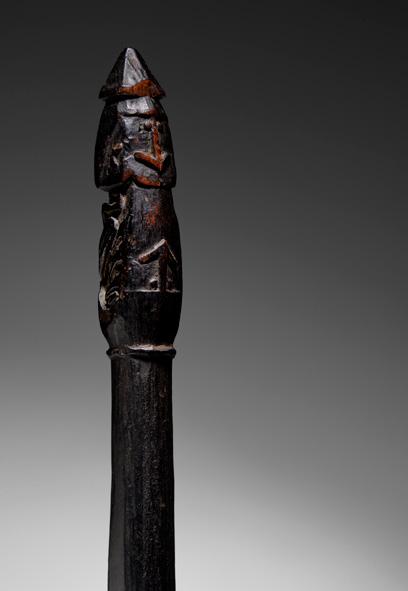

Provenance: Irwin Hersey collection, New York European private collection
€ 1000 - 1500
New Guinea Wood, 17,5 cm
Provenance: Private collection, Netherlands European private collection
€ 1500 - 2000
122 . Korwar Spatula 123 . Korwar Charm124 Etna Bay Korwar
New Guinea
Wood and shell, 41 cm
Provenance: Marcia and John A. Friede-Jolika collection, Rye / San Francisco / New York
European private collection
€ 10 000 - 12 000
Korwar or ancestor figure with distinctive arrow-shaped nose and disproportionately large head. This type of seating figure portrayed recently deceased ancestors and was believed to contain their spirits.

For a comparable sculpture, see Josef Röder, Felsbilder und Vorgeschichte des MacCluer-Golfes
West-Neuguinea, L. C. Wittich Verlag, 1959.
125 Massim Lime Spatula
Trobriand Islands, Papua New Guinea Wood, 31,5 cm
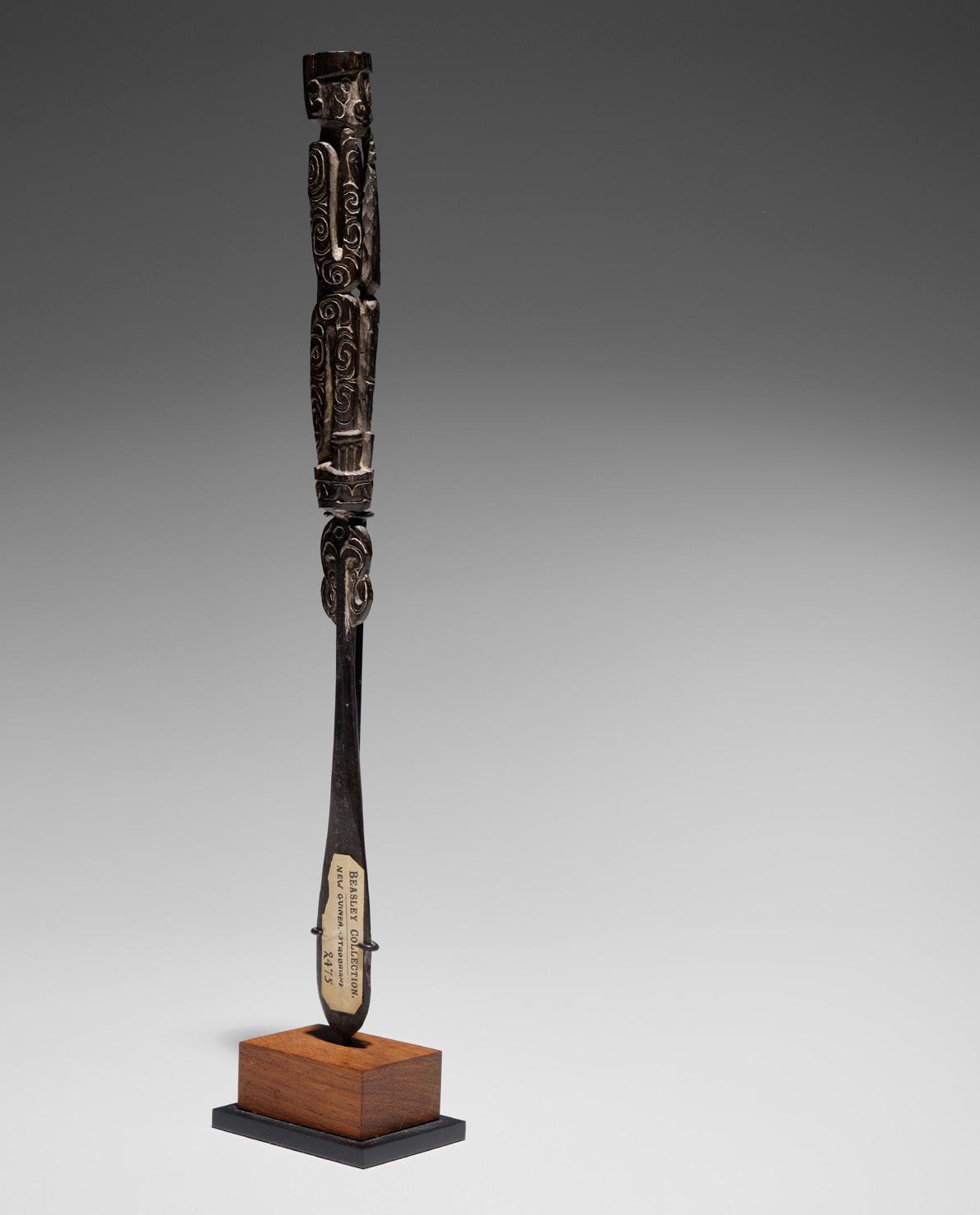
Provenance: Harry G. Beasley, London European private collection
€ 3000 - 5000
With label bearing Beasley collection inventory number 2475
Ga Porova Ra Maru Bird Head Club New Caledonia Wood, 71 cm

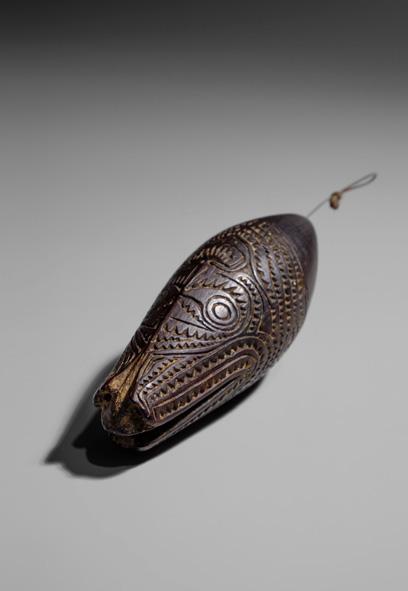
Provenance:
Alexandre Bernand collection, Paris European private collection
€ 2000 - 3000
Papua New Guinea Baby coconut, 12,5 cm
Provenance:
Eugène Brands (1913-2002), Amsterdam (1963)
Helena "Leo" Rubbens (1919-2011), Amsterdam (received as a gift by the former) Since by descent
€ 600 - 800
Taking part in auctions constitutes unconditional acceptance of these Conditions of Sale. 1. Auctions and state of the objects
a) The objects at auction are put up for auction by Native on behalf and in the name of the person who has deposited them ("Vendor").
Adjudication is made in favor of the highest bidder in Euros acknowledged by Native at the time of the auction ("Buyer") and the Sales Contract between the depositor and the Buyer is concluded by this adjudication.
The object being sold is released to the Buyer only against payment in cash or bank transfer. To be accepted as means of payment, cheques must be cleared by the bank on which they are drawn before the object auctioned can be released.
b) Objects are put in the auction in the state in which they are found at the time of the auction. Subject to point 1c. below, any guarantee for material damage or legal damages is excluded.
The objects are on display during the event. The descriptions shown in catalogs, advertisements, brochures or any other article or document issued by Native are given purely by way of illustration. They in no way commit the liability of Native. Consequently, Native guarantees neither the accuracy of the explanatory notes contained in the catalog, nor the origin, date, age, cultural background or provenance of the objects put up for auction. It is the depositor who is solely liable for the explanatory notes in the catalog. Native agrees to reproduce them in the catalog only in its capacity as agent for the depositor.
c) Native freely states that it is prepared to cancel the auction on behalf of the depositor and refund only the hammer price, commission and VAT if an object sold should prove, within 1 year from the date of the auction, to be a modern intentional fake. By modern intentional fake is to be understood a reproduction which it can be proved has been made with the intention of deceiving others whether in respect of origin, date, age, cultural background or source, without this having been shown in the catalog.
The condition for this refund is that the Buyer sends an immediate claim by registered letter to Native as soon as the defect has come to light and at the latest by 1 year from the date of the auction and that he immediately return the fake object in the same state as on the day of the auction and exempt of any third-party claim. The Buyer must provide proof that the object auctioned is a fake compared with the description in the catalog and that the object is identical to the item auctioned. Any other claim by the Buyer is excluded.
d) Buyers must, at their own expense, come and collect the objects auctioned within 10 working days from the end of the auction during opening times at Native, namely from Monday to Friday 10:00 to 16:30. If sufcient time is available, objects will be released after each session. In accordance with point 1, handover will be against payment in cash for lots up to € 2 999.
During the abovementioned period, Native is liable for the loss, theft, damage or destruction of the objects auctioned and paid for, although only up to the amount of the price of the auction, commission and VAT. On the expiry of this period, Native’s liability ceases. If the objects auctioned are not withdrawn within 10 working days, they will be stored at the expense and risk of the Buyer.
e) Each Buyer is personally responsible for the item awarded to him at auction. Proof of powers of attorney may be required from persons acting as third-party representatives or as an organ of a corporate body. The representative is jointly and severally liable with the person represented for meeting all commitments.
2. Hammer price, commission, risk transfer, ownership transfer, payment, invoicing, VAT, importing and exporting
a) In addition to the hammer price, the Buyer owes a supplement ("commission") on the hammer price. Commission is 25% of the hammer price. In case of bidding through an internet platform, an extra commission will be added by those. Commission for drouot.com is 1,5% on the hammer price, for liveauctioneers.com 5%. The Buyer must also pay Belgian VAT (21%) calculated only on the commission. For lots where the Vendor is a non-resident of the EU (lots indicated by ‡), the Buyer will pay an import tax of 6% in addition to the bid price plus legal costs. The amount of this tax will be reimbursed on presentation of proof of export outside the E.U.
b) Ownership of the object auctioned passes to the Buyer once the hammer has come down fnally. Until full payment of the hammer price, commission and VAT, Native reserves a right of retention and lien on all objects in its keeping. The release of the auctioned object to the Buyer is not made until after full payment of the hammer price, commission and VAT.
c) An auctioned object must be paid for within 7 days after the auction. If the Buyer
remains in default on payment 30 days after the auction, any sum due at that time will, as of right and without any formal notifcation being necessary, be subject to interest on arrears of 10% per annum. Moreover, in the event of non-payment by the fnal deadline, any sum due will be increased as of right by a fat-rate indemnity of 15%, without prejudice to Native’s right to seek full reparation of the damage sufered.
In addition, if the payment due by the Buyer does not take place or is not made in time, Native can, as it chooses and in the name of the depositor, either continue to demand that the sales contract be executed or, without being bound to set a fxed time, waive the right to require execution of the sales contract and claim damages for nonexecution or even renounce the contract. The Buyer is liable in respect of Native and the depositor for all damages resulting from non-payment or late payment.
d) According to the law of 30 June 1994 on authors’ rights, the Buyer shall pay in addition to the hammer price an Artist Resale Right (droit de suite) of 4% on the part of the hammer price from 0 € to 50,000 €, of 3% on the part of the hammer price from 50,001 € to 200,000 €, of 1% on the part of the hammer price from 200,001 € to 350,000 €, of 0.5% on the part of the hammer price form 350,001 € to 500,000 € and of 0.25% for the last part of the hammer price above 500,001 €.
e) The exporting of any object from Belgium and the importing into a third country may be subject to particular authorisations. The Buyer is responsible for obtaining all necessary export or import licenses. Refusal of these authorisations or any delays after they have been obtained will in no case be grounds for a cancellation of the sale or a delay in payment.
3. Registration and attendance at the Sale
a) The submission of a bid or an absentee bid unconditionally and irrevocably binds the bidder. The bidder remains bound to his ofer until this becomes the subject of a higher bid or is rejected by Native. Double bids become the subject of an immediate new call to bid; in cases where there is doubt, the senior auctioneer decides the matter by drawing lots.
b) Bidders who are not personally known to Native are bound to give legitimate proof of identity before the beginning of the auction. Native reserves the right to request proof of the bidder’s solvency. If this latter document is not available, Native is authorised to demand the immediate payment of a cash deposit equal to 10% of the auction price or the lodging of a guarantee. If this deposit is not paid or guarantee lodged, Native is authorised on behalf of the depositor to cancel the auction.
c) Native is free to reject a bid without giving reasons. Similarly, it is within its rights to hold an auction without selling or withdraw objects from the auction. Native reserves the right to refuse any person access to its commercial premises or forbid any person from taking part in one of its auctions.
d) Bids from interested parties who do not wish to attend the auction personally will be taken into consideration if they communicate such a wish in writing 24 hours before the start of the auction.
Interested persons can bid by telephone if they have not announced their wishes in writing at least 24 hours before the start of the auction. Native accepts bids by telephone for lots whose lowest estimate reaches at least € 1,000.
Native disclaims all responsibility for ofers that have not been taken into account as well as for bids made by telephone which may not have been taken into account.
The rules set down in point 3b in respect of providing proof of identity and solvency also apply to persons bidding by telephone or in writing. For bidders who place their ofer via the Internet, in other words an absentee bid, point 3b applies only in respect of solvency.
Native cannot be held responsible in the event of dysfunction of the platforms used to bid online. The user must read and accept, without reservation, the conditions of use of this platform.
4. Miscellaneous
The auction is held under the joint authority of a huissier de justice (Court Justice). Any liability on the part of Native arising from acts attributable to the huissier involved is excluded.
b) The foregoing stipulations are an integral part of each individual sales contract concluded at sales by auction. Amendments to them are in no way binding unless Native has given its agreement to them in writing.
c) Any dispute on the validity, interpretation and execution of these Conditions of Sale and any dispute on the conducting of the auctions will be subject to Belgian law, with the exception of (a) the stipulations of the Vienna Convention on international sales contracts and (b) the rules of referral to Belgian international private law.
d) Only the courts and tribunals of Brussels are competent to rule on any disputes.
La participation aux enchères emporte l’acceptation inconditionnelle aux présentes conditions de vente.
1. Enchères et état des objets
a) Les objets d’enchères sont mis aux enchères par Native pour le compte et au nom de celui qui les a déposés ("vendeur").
L’adjudication a lieu au plus ofrant en Euros reconnu par Native lors de la vente aux enchères ("Acheteur") ; le contrat de vente entre le déposant et l’Acheteur est conclu par cette adjudication.
L’objet de la vente n’est remis à l’Acheteur que contre un paiement en espèces ou transfert bancaire. Pour être admis comme moyens de paiement, les chèques doivent être confrmés par la banque tirée avant la délivrance de l’objet adjugé.
b) Les objets sont mis aux enchères dans l’état dans lequel ils se trouvent au moment de l’adjudication. Sous réserve du point 1c. ci-dessous, toute garantie pour dommages matériels ou juridiques est exclue.
Les objets sont visibles pendant l’exposition. Les descriptions fgurant dans les catalogues, annonces, brochures ou tout autre écrit émanant de Native ne sont données qu’à titre purement indicatif. Elles n’engagent en aucun cas la responsabilité de Native. Par conséquent, cette dernière ne garantit ni l’exactitude des notices explicatives reprises dans le catalogue, ni l’origine, la date, l’âge, le cercle de culture ni la provenance des objets mis aux enchères. Les notices explicatives reprises dans le catalogue relèvent de la seule responsabilité du déposant. Native n’accepte de les reproduire dans le catalogue qu’en tant qu’intermédiaire de ce dernier.
c) Native se déclare librement disposée à annuler l’adjudication au nom du déposant et à rembourser uniquement le prix de l’adjudication, la commission et la TVA, si un objet vendu devait s’avérer, dans un délai de 1 an à compter de la date de l’adjudication, être le résultat d’un faux intentionnel moderne. Il faut entendre par faux intentionnel moderne une reproduction dont il est prouvable qu’elle a été faite dans l’intention de tromper fallacieusement autrui, que ce soit en ce qui concerne l’origine, la date, l’âge, le cercle de culture ou la source, sans que cela ressorte du catalogue.
La condition de ce remboursement est que l’Acheteur adresse une réclamation immédiate, sous pli recommandé adressé à Native, dès la découverte du vice et au plus tard dans un délai de 1 an à compter de la date de l’adjudication, et qu’il restitue immédiatement l’objet falsifé à Native dans le même état que le jour de l’adjudication et exempt de toute prétention de tiers.
L’Acheteur doit fournir la preuve que l’objet adjugé est un faux par rapport à la description du catalogue et que l’objet est identique à la chose adjugée. Toute autre prétention de l’Acheteur est exclue.
d) Les Acheteurs doivent venir chercher, à leurs propres frais, les objets adjugés dans les 10 jours ouvrables qui suivent la clôture de la vente aux enchères, pendant l’horaire d’ouverture de Native, soit du lundi au vendredi de 10:00 à 16:30. Si le temps à disposition est sufsant, les objets seront délivrés après chaque séance. Conformément au point 1., la remise a lieu contre paiement en espèces.
Pendant le délai précité, Native est responsable de la perte, du vol, de l’endommagement ou de la destruction des objets adjugés et payés, à concurrence toutefois du montant du prix de l’adjudication, de la commission et de la TVA. À l’expiration de ce délai, la responsabilité de Native cesse. Si les objets adjugés ne sont pas retirés dans les 10 jours ouvrables, ils seront entreposés aux frais et aux risques de l’Acheteur.
e) Chaque Acheteur répond personnellement de l’adjudication qui lui a été faite. La preuve de pouvoirs de représentation peut être exigée de personnes qui agissent comme représentants pour le compte de tiers ou comme organe d’une personne morale. Le représentant répond solidairement avec le représenté de l’accomplissement de tous les engagements.
2. Prix de l’adjudication, commission, transfert des risques, transfert de la propriété, paiement, facturation, TVA, importation et exportation
a) Outre le prix d’adjudication, l’Acheteur est débiteur d’un supplément ("commission") sur le prix d’adjudication. La commission est de 25% du prix d’adjudication.
En cas d'enchère via une plateforme internet, une commission supplémentaire sera ajoutée par celle-ci. Pour drouot.com cette commission s'élève à 1,5% sur le prix marteau, pour liveauctioneers.com à 5% sur le prix marteau. L’acheteur doit également s’acquitter de la TVA belge (21%) calculée uniquement sur la commission.
Pour les lots dont le vendeur est non-résident de l’ E.U (lots signalés par ‡) l’adjudicataire paiera une taxe importation de 6% en sus de l’adjudication, plus les frais légaux. Le montant de cette taxe sera remboursé sur présentation de la preuve d’exportation hors E.U.
b) La propriété de l’objet adjugé passe à l’Acheteur dès l’adjudication. Jusqu’au complet paiement du prix de l’adjudication, de la commission et de la TVA, Native se réserve un droit de rétention et de gage sur tous les objets sous sa garde. La délivrance de l’objet adjugé à l’Acheteur n’intervient qu’après complet paiement du prix de l’adjudication, de la commission et de la TVA.
c) Un objet adjugé doit être payé dans les 7 jours dès la clôture de la vente aux enchères. Si l’Acheteur est resté en défaut de paiement 30 jours après l’adjudication, toute somme due à
ce moment portera, de plein droit et sans mise en demeure préalable, un intérêt moratoire de 10% par an. En outre, en cas de non paiement à l’échéance, toute somme due sera majorée de plein droit d’une indemnité forfaitaire de 15%, sans préjudice du droit de Native de postuler la réparation intégrale du dommage subi.
En outre, si le paiement dû par l’Acheteur n’a pas lieu ou n’intervient pas à temps, Native peut, à son choix et au nom du déposant, soit continuer à exiger l’exécution du contrat de vente, soit sans être tenu d’impartir un délai renoncer au droit de demander l’exécution du contrat et réclamer des dommages et intérêts pour cause d’inexécution ou encore se départir du contrat. L’Acheteur est responsable vis-à-vis de Native et du déposant de tous les dommages découlant du non-paiement ou du paiement tardif.
d) Conformément à la loi du 30 juin 1994 sur les droits d'auteur, l'acheteur doit payer en plus du prix d'adjudication un droit de suite de 4 % sur la partie du prix d'adjudication comprise entre 0 € et 50 000 €, de 3 % sur la partie du prix d'adjudication comprise entre 50 001 € et 200 000 €, de 1 % sur la partie du prix d'adjudication comprise entre 200 001 € et 350 000 €, de 0,5 % sur la partie du prix d'adjudication comprise entre 350 001 € et 500 000 € et de 0,25 % sur la dernière partie du prix d'adjudication comprise entre 500 001 € et 500 000 €. 5% sur la partie du prix d'appel de 350.001 € à 500.000 € et de 0,25% pour la dernière partie du prix d'appel au-delà de 500.001 €. Le droit de suite s’éteint lorsque l’artiste est décédé depuis plus de 70 ans.
e) L’exportation de tout objet hors de la Belgique et l’importation dans un pays tiers peuvent être sujettes à des autorisations particulières. L’Acheteur est responsable de l’obtention de toutes les autorisations requises à l’exportation ou à l’importation. Le refus de ces autorisations, ou tous retards consécutifs à leur obtention, ne justifera en aucun cas l’annulation de la vente ni un retard de paiement.
3. Enregistrement et participation à la vente
a) La remise d’une enchère ou d’un ordre d’achat " absentee bid ’ lie inconditionnellement et irrévocablement l’enchérisseur. L’enchérisseur demeure lié à son ofre jusqu’à ce que celle-ci fasse l’objet d’une surenchère ou qu’elle soit écartée par Native. Les enchères doubles font l’objet d’un nouvel appel immédiat ; dans les cas douteux, la direction des enchères tranche par tirage au sort.
b) Les enchérisseurs qui ne sont pas personnellement connus de Native sont tenus de se légitimer avant le début de la vente aux enchères. Native se réserve le droit d’exiger une preuve de la solvabilité de l’enchérisseur. Si ce dernier document fait défaut, Native est habilitée à exiger le paiement immédiat d’un acompte en espèces équivalent à 10% de l’adjudication ou le dépôt d’une garantie. À défaut du versement de cet acompte ou du dépôt de cette garantie, Native est autorisée au nom du déposant à annuler l’adjudication.
c) Native est libre d’écarter une enchère sans indication des motifs. De même, elle est en droit d’adjuger sans vente ou de retirer des objets de la vente aux enchères. Native se réserve le droit de refuser à toute personne l’accès à ses locaux commerciaux ou d’interdire à toute personne de participer à l’une de ses ventes aux enchères.
d) Les ofres d’enchères émanant d’intéressés qui ne souhaitent pas assister personnellement à la vente aux enchères seront prises en considération par écrit jusqu’à 24 heures avant le début de la vente aux enchères.
Les personnes intéressées peuvent enchérir par téléphone si elles se sont annoncées par écrit au minimum 24 heures avant le début des enchères. Native accepte les enchères par téléphone pour des lots dont l’estimation basse atteint au moins 1000 €.
Native décline toute responsabilité pour les ofres n’ayant pas été prises en considération ainsi que pour les enchères téléphoniques qui n’auraient pas été prises en compte.
Les normes prévues au point 3b. concernant la légitimation et la preuve de la solvabilité s’appliquent également aux enchérisseurs par téléphone et par écrit. Pour les enchérisseurs, qui donnent leur ofre via Internet dans le cadre d’un ordre d’achat (absentee bid), le point 3b. ne s’applique qu’en ce qui concerne la solvabilité.
Native ne peut être responsable en cas de dysfonctionnement des plateformes utilisées pour enchérir en ligne. L’utilisateur doit prendre connaissance et accepter, sans réserve, les conditions d’utilisation de cette plateforme.
4. Divers
a) La vente aux enchères se déroule sous l’autorité conjointe d’un huissier de justice. Toute responsabilité de Native du fait d’actes imputables à l’huissier instrumentant est exclue.
b) Les dispositions qui précèdent font intégralement partie de chaque contrat individuel de vente conclu à l’occasion des ventes aux enchères. Leurs modifcations n’ont de portée obligatoire que si Native leur a donné son accord écrit.
c) Tout litige relatif à la validité, l’interprétation et l’exécution des présentes conditions de vente et tout litige relatif au déroulement des enchères sera soumis au droit belge, à l’exception (a) des dispositions de la Convention de Vienne concernant les contrats de vente internationale et (b) des règles de renvoi du droit international privé belge.
d) Seuls les cours et tribunaux de Bruxelles sont compétents pour connaître d’éventuels litiges.
Het deelnemen aan het opbod veronderstelt de onvoorwaardelijke aanvaarding van onderhavige voorwaarden.
1. Opbod en staat van de voorwerpen
a) De ter veiling aangeboden voorwerpen worden door Native geveild voor rekening en in naam van de persoon die ze hiervoor heeft afgeleverd ("verkoper’).
De toewijzing gebeurt aan diegene die tijdens de veiling door Native als hoogste bieder in euro wordt erkend ("koper’) en geldt als verkoopovereenkomst tussen de verkoper en de koper.
Het voorwerp van de verkoop wordt alleen aan de koper overhandigd tegen contante betaling of na bankoverschrijving. In geval van betaling per cheque dient de uitgeschreven cheque te worden bevestigd door de bank waarop hij getrokken wordt, alvorens het toegewezen voorwerp wordt overhandigd.
b) De voorwerpen worden geveild in de staat waarin zij zich op het moment van de veiling bevinden. Onder voorbehoud van hierna vermeld punt 1c. is elke garantie voor materiële of juridische schade uitgesloten.
De voorwerpen kunnen worden bezichtigd tijdens de tentoonstelling. De beschrijvingen in de catalogi, advertenties, brochures of andere geschriften afkomstig van Native hebben een louter indicatieve waarde en stellen Native geenszins aansprakelijk. Native biedt dus geen garantie met betrekking tot de juistheid van de beschrijvingen in de catalogus, de oorsprong, de datum, de leeftijd, de cultuur of de afkomst van de geveilde voorwerpen. Alleen de verkoper is aansprakelijk voor de in de catalogus opgenomen beschrijvingen. Native neemt deze beschrijvingen alleen in zijn catalogus op als tussenpersoon van de verkoper.
c) Native verklaart zich bereid om de verkoop in naam van de verkoper te annuleren en de hamerprijs, de commissie en de btw terug te betalen, indien binnen 1 jaar na de verkoopdatum zou blijken dat een verkocht voorwerp het resultaat is van een opzettelijke moderne vervalsing. Onder opzettelijke moderne vervalsing verstaan wij een reproductie waarvan bewezen kan worden dat zij is gemaakt met het opzet een ander te bedriegen, hetzij met betrekking tot de oorsprong, hetzij op het vlak van de datum, de leeftijd, de cultuur of de bron, zonder dat dit duidelijk uit de catalogus blijkt.
Voorwaarde voor deze terugbetaling is dat de koper onmiddellijk na de ontdekking van het gebrek en ten laatste binnen een termijn van 1 jaar te rekenen vanaf de datum van de verkoop aangetekend klacht bij Native indient, en dat hij het nagemaakte voorwerp onmiddellijk aan Native terugbezorgt in de staat waarin het zich op de dag van de verkoop bevond en vrij van elke aanspraak van derden. De koper moet het bewijs leveren dat het verkochte voorwerp een vervalsing is ten opzichte van de beschrijving in de catalogus en dat het voorwerp wel degelijk het verkochte voorwerp is. Elke andere vordering van de koper is uitgesloten.
d) De koper dient op eigen kosten en binnen een termijn van 10 werkdagen na het afsluiten van de veiling de gekochte stukken af te halen. Dit kan tijdens de openingsuren van Native: van maandag t/m vrijdag van 10:00 tot 16:30. Indien er voldoende tijd is kunnen de aangekochte loten na de veiling overhandigd worden mits contante betaling en indien de prijs lager is dan € 3 000.
Tijdens de hierboven vermelde termijn is Native aansprakelijk voor verlies, diefstal, beschadiging of vernieling van de verkochte en betaalde goederen.
Deze aansprakelijkheid beperkt zich tot maximaal het bedrag van de verkoop, de commissie en de btw. Na deze termijn eindigt de aansprakelijkheid van Native. Indien de verkochte voorwerpen niet zijn afgehaald binnen een termijn van 10 werkdagen, worden zij bewaard op kosten en voor risico van de koper.
e) Elke koper staat persoonlijk in voor de verkoop die aan hem werd gedaan. Aan personen die handelen als vertegenwoordiger en voor rekening van derden of als een orgaan van een rechtspersoon, kan een bewijs van machtiging tot vertegenwoordiging worden geëist. De vertegenwoordiger is solidair verantwoordelijk met de vertegenwoordigde voor het naleven van alle verplichtingen.
2. Hamerprijs, commissie, risico-overdracht, eigendomsoverdracht, betaling, facturatie, btw, import en export
a) Naast de prijs van de verkoop is de koper ook een toeslag ("commissie’) op de hamerprijs verschuldigd. De commissie bedraagt 25 % van de hamerprijs. Indien geboden wordt via een internet platform zal een extra commissie aangerekend worden door deze. Voor drouot.com bedraagt deze commissie 1,5 % op de hamerprijs, voor liveauctioneers.com 5%.
De koper is eveneens de Belgische btw (21 %) op de commissie verschuldigd.
Voor kavels waarvan de verkoper niet-ingezetene is van de E.U. (kavels aangeduid met ‡) betaalt de koper een invoertaks van 6 % op de hamerprijs, plus de wettelijke kosten.
Het bedrag van deze taks wordt terugbetaald op vertoon van het bewijs van export buiten de E.U.
b) De eigendom van het verkochte voorwerp gaat over op de koper vanaf het ogenblik van de verkoop. Tot op het ogenblik van de volledige betaling van de hamerprijs, de commissie en de btw, kan Native pandrecht en retentierecht inroepen voor de stukken die het in bewaring heeft. Het overhandigen van het aan de koper verkochte voorwerp vindt pas plaats na volledige betaling van de hamerprijs, de commissie en de btw.
c) Een verkocht voorwerp moet binnen de 7 dagen na sluiting van de veiling betaald zijn. Indien de koper 30 dagen na de verkoop nalaat te betalen, worden alle bedragen die op dat ogenblik verschuldigd zijn van rechtswege en zonder voorafgaande ingebrekestelling verhoogd met een verwijlinterest van 10 % per jaar. Bij niet-betaling op de vervaldag wordt elk verschuldigd bedrag bovendien van rechtswege verhoogd met een vaste vergoeding van 15 %, ongeacht het recht van Native om de volledige vergoeding van de geleden schade te eisen.
Indien de door de koper verschuldigde betaling niet of niet tijdig plaatsvindt, kan Native bovendien naar eigen keuze en in naam van de verkoper hetzij de uitvoering van de verkoopovereenkomst eisen, hetzij - zonder daarom gehouden te zijn tot het toekennen van een termijn - afstand doen van het recht om uitvoering van de verkoopovereenkomst te eisen en schadevergoeding vragen voor niet-naleving van het contract, hetzij afzien van het contract. De koper is aansprakelijk ten opzichte van Native en de verkoper voor alle schade ingevolge niet-betaling of laattijdige betaling.
d) Overeenkomstig de wet van 30 juni 1994 betrefende het auteursrecht betaalt de koper bovenop de hamerprijs een volgrecht (droit de suite) van 4% over het gedeelte van de hamerprijs van 0 € tot 50.000 €, van 3% over het gedeelte van de hamerprijs van 50.001 € tot 200.000 €, van 1% over het gedeelte van de hamerprijs van 200.001 € tot 350.000 €, van 0,5% over het gedeelte van de hamerprijs van 350.001 € tot 500.000 € en van 0,25% voor het laatste gedeelte van de hamerprijs boven 500.001 €. 5% op het gedeelte van de hamerprijs van 350.001 € tot 500.000 € en van 0,25% voor het laatste gedeelte van de hamerprijs boven 500.001 €. Het volgrecht dooft uit wanneer de artiest sedert meer dan 70 jaar is overleden
e) Voor export van een voorwerp buiten België en import in een ander land kunnen bijzondere vergunningen vereist zijn. De koper is verantwoordelijk voor het verkrijgen van alle vereiste exportof importvergunningen. Niet-toekenning of vertraging door de laattijdige toekenning van de nodige vergunning vormt geen geldige reden voor annulatie van de verkoop of uitstel van betaling.
3. Inschrijving en deelname aan de verkoop
a) Het uitbrengen van een bod of het doorgeven van een aankooporder "absentee bid’ is onvoorwaardelijk en onherroepelijk bindend voor de bieder. De bieder blijft gebonden door zijn bod tot er een hoger bod gedaan wordt of het bod door Native verworpen wordt. In geval van een dubbel bod wordt onmiddellijk opnieuw afgeroepen; bij twijfel beslist de directie van de veiling door loting.
b) Bieders die niet persoonlijk bij Native bekend zijn, dienen zich bij aanvang van de veiling te legitimeren. Native behoudt zich het recht voor een bewijs van kredietwaardigheid van de bieder te vragen. Indien dit document niet kan worden voorgelegd, is Native gemachtigd onmiddellijk betaling van een contant voorschot van 10 % van de toewijzing of een borg te eisen. Bij afwezigheid van voorschot of borg is Native gemachtigd om de verkoop in naam van de verkoper te annuleren.
c) Native mag naar eigen inzicht een bod verwerpen zonder verklaring van zijn beslissing. Bovendien heeft Native het recht om voorwerpen te gunnen zonder verkoop of uit de veiling terug te trekken. Native behoudt zich het recht voor aan personen toegang tot de handelslokalen of deelname aan de veiling te weigeren.
d) Personen die niet persoonlijk aan de veiling wensen deel te nemen, kunnen hun bod schriftelijk uitbrengen tot 24 uur voor de aanvang van de veiling.
Ook telefonisch bieden is mogelijk, indien de telefonische bieder zich ten minste 24 uur voor de aanvang van de veiling schriftelijk heeft aangemeld. Native aanvaardt telefonische biedingen voor kavels waarvan de waarde op minstens 1000 euro is geschat.
Native weigert elke aansprakelijkheid voor biedingen die niet in aanmerking zijn genomen of indien geen rekening werd gehouden met een telefonisch bod.
De criteria vermeld in punt 3b met betrekking tot de legitimatie en het bewijs van kredietwaardigheid zijn ook van toepassing voor personen die hun bod per telefoon of schriftelijk uitbrengen. Voor bieders die hun bod via de website uitbrengen in het kader van een aankooporder (absentee bid), geldt alleen de vermelding in punt 3b met betrekking tot de kredietwaardigheid.
Native kan niet aansprakelijk worden gesteld voor eventuele storingen van de platforms die worden gebruikt om online te bieden. De gebruiker moet de gebruiksvoorwaarden van dit platform lezen en zonder voorbehoud aanvaarden.
4. Varia
a) De veiling vindt plaats onder medetoezicht van een deurwaarder. Native weigert elke aansprakelijkheid met betrekking tot daden die toe te schrijven zijn aan de instrumenterende deurwaarder.
b) Voormelde bepalingen maken integraal deel uit van elk individueel verkoopcontract dat ter gelegenheid van een veiling gesloten wordt. Wijzigingen aan deze voorwaarden zijn slechts bindend indien Native zich hiermee schriftelijk akkoord heeft verklaard.
c) Voor geschillen over de geldigheid, interpretatie en uitvoering van onderhavige verkoopvoorwaarden en het verloop van de veiling, is het Belgische recht van toepassing, met uitzondering van (a) de bepalingen van de Conventie van Wenen met betrekking tot internationale verkoopovereenkomsten en (b) de regels die verwijzen naar het Belgische Internationale Privaatrecht.
d) In geval van geschil zijn alleen de rechtbanken van Brussel bevoegd.
Nicolas Paszukiewicz
Sébastien Hauwaert
Gilles Marquenie
PHOTOGRAPHY BY
Nicolas Paszukiewicz
Sébastien Hauwaert
Printed by Snel Grafcs
Auction 24
27 May 2023 - Brussels
Ruysbroeck Galerij 5
Galerie de Ruysbroeck 5
Brussel 1000 Bruxelles
T +32(0)2 514 04 42
info@native - auctions.com
VAT BE0835 325 693
NAME
ADRESS
ADRESS FOR INVOICING
I have read and accept the conditions of sale of Native. Please bid on my behalf for the following lots up to the hammer price mentionned on this form. These bids are to be executed as cheaply as is permitted by other bids.
If any bid is successfull, I agree to pay in addition to the hammer price the buyer’s premium and the VAT mentionned in the conditions of sale.
Please attached a copy of the identity card or passport to this form.
Lot number Title
EMAIL TEL BANK IBAN BIC/SWIFT
VAT NUMBER
DATE
SIGNATURE
Hammer price (excluding buyer’s premium and VAT)
Our next online sale of modern and contemporary art will include more works from the Brussels collection that included the works presented in this sale by Antonio Asis, Arthur Craco, Hugo Demarco, Willy Finch, Jean-Jacques Gaillard, Edward Kienholz, Walter Leblanc, Stéphane Mandelbaum, Christian Megert, Dennis Oppenheimer and Richard Tuttle.
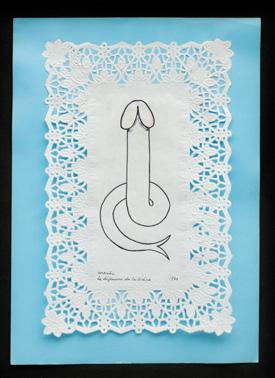
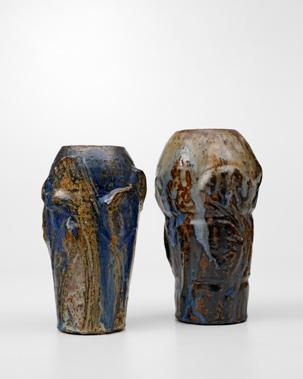

www.native-auctions.com